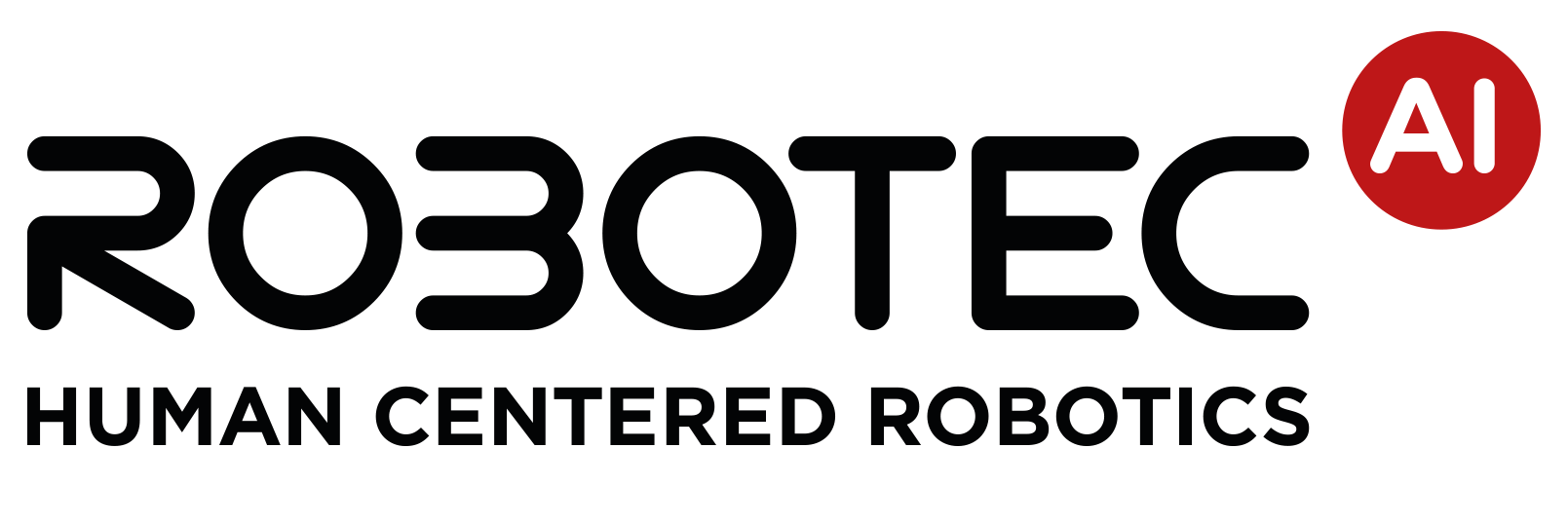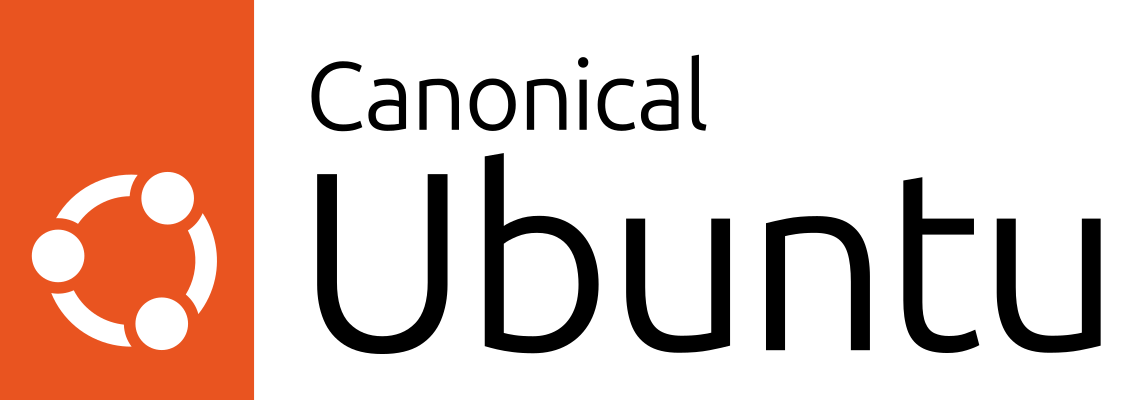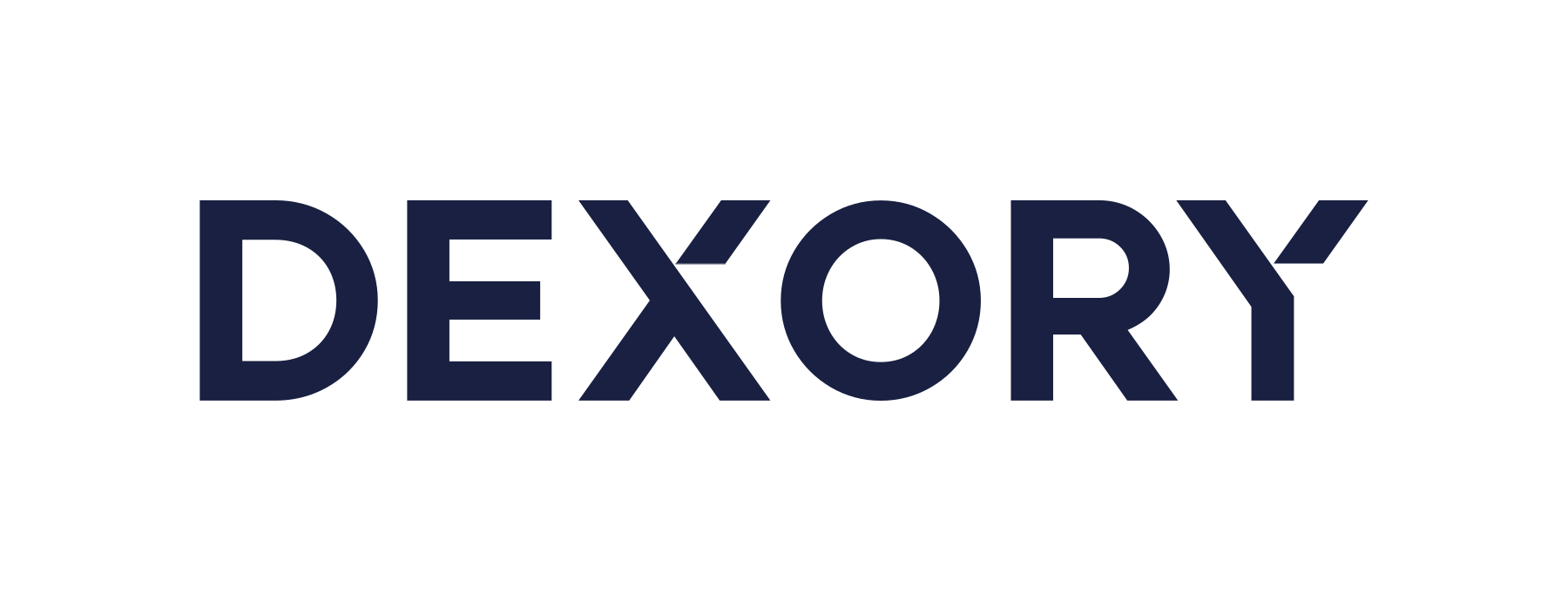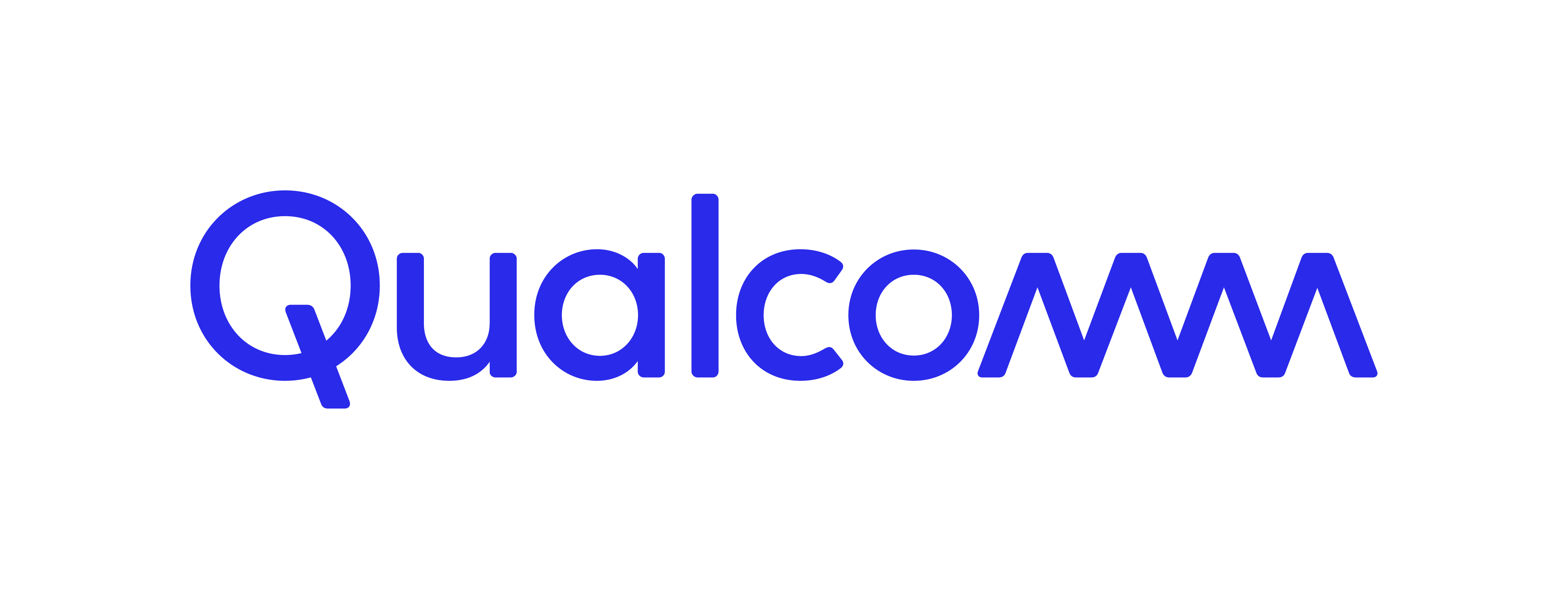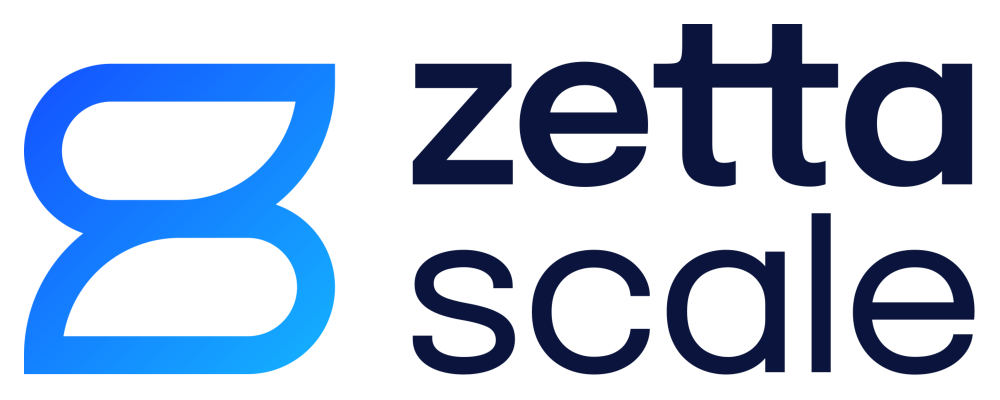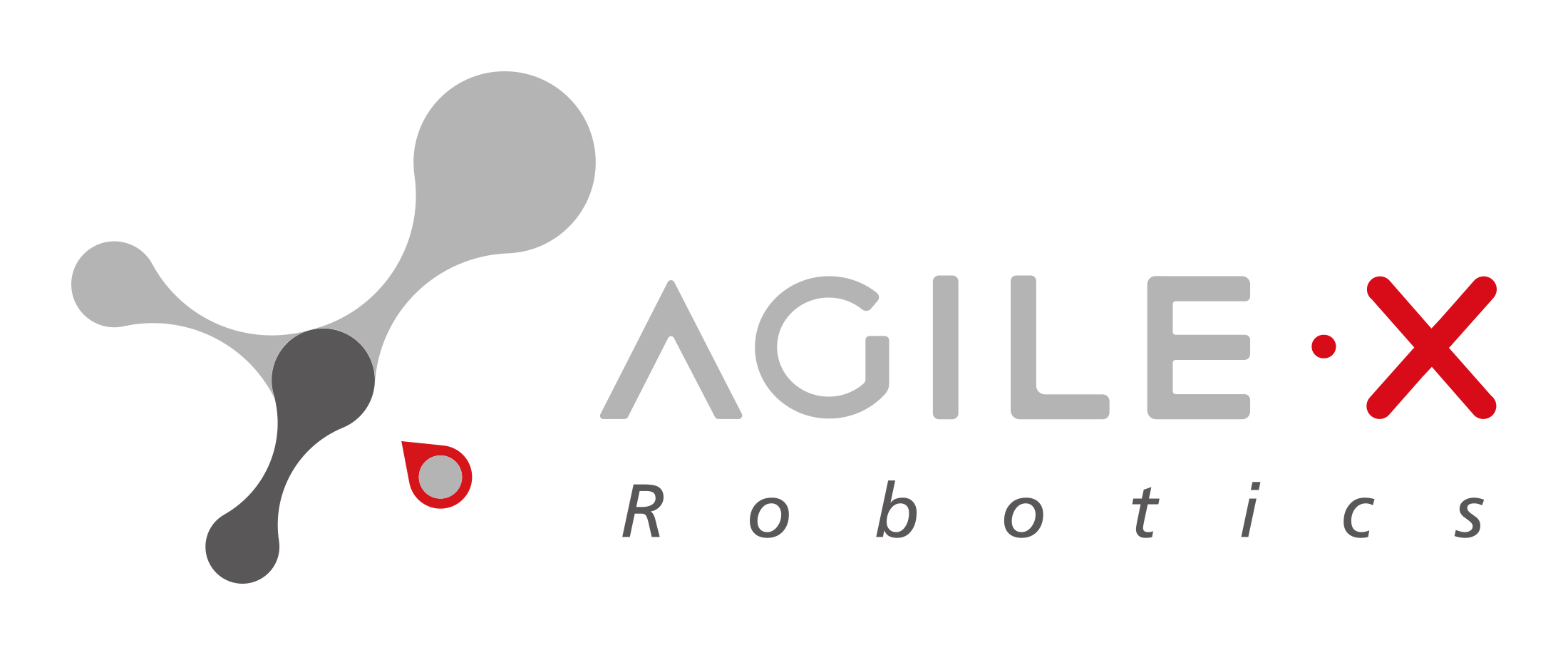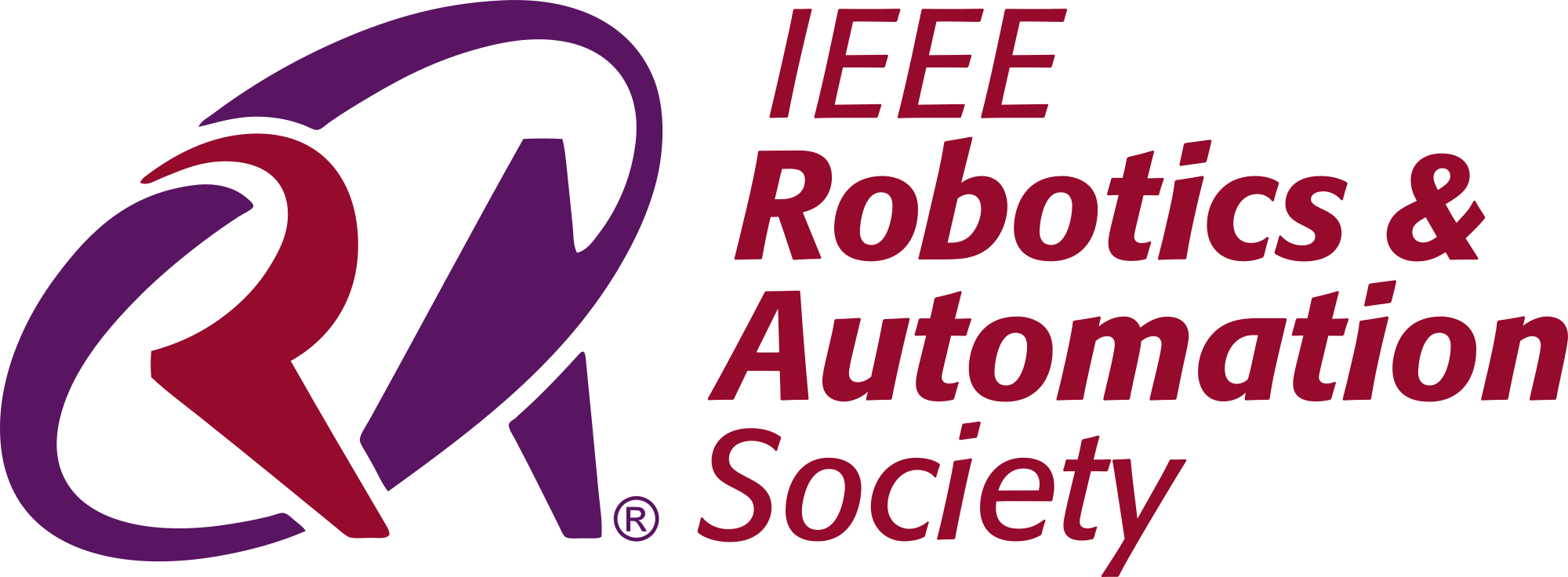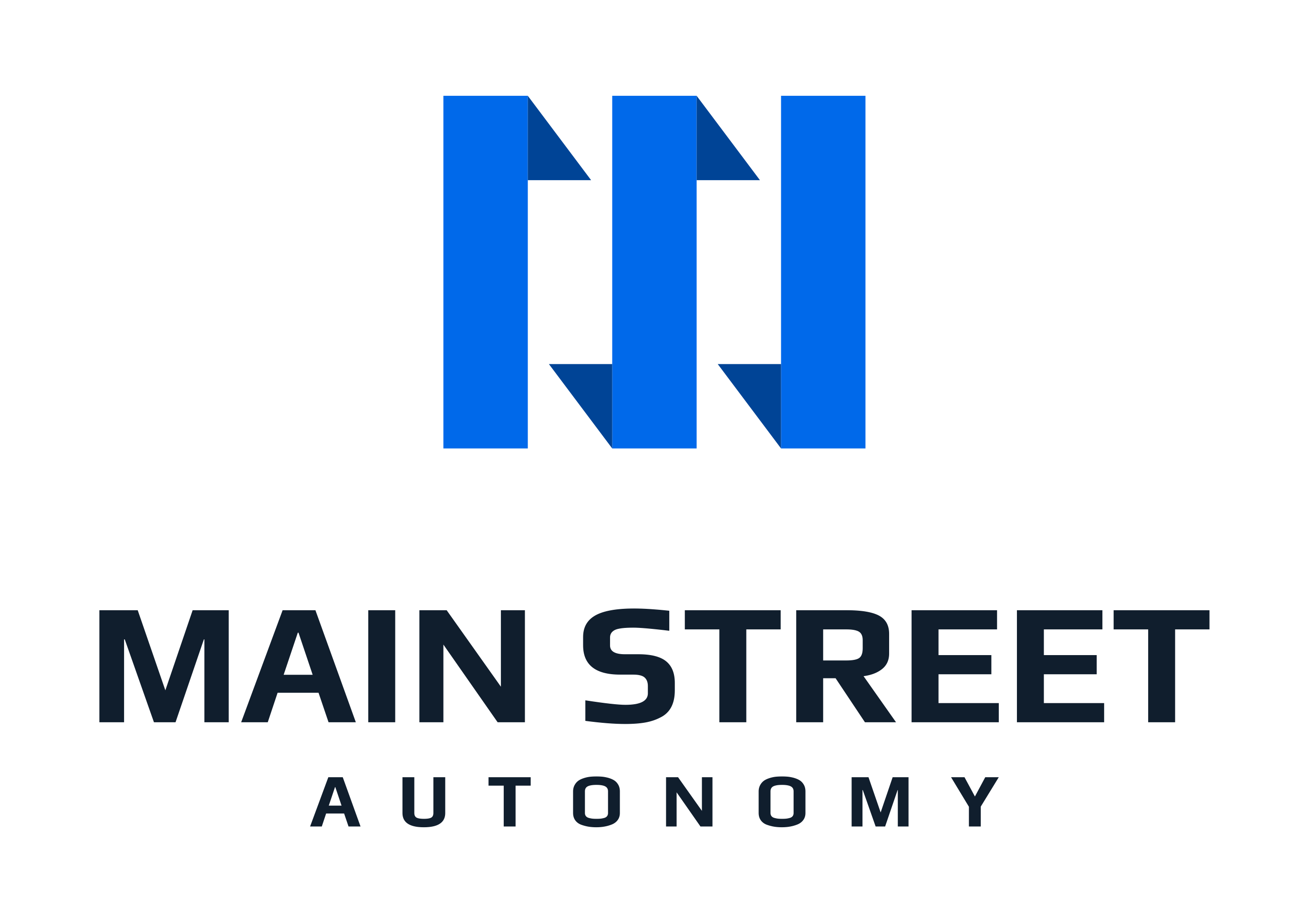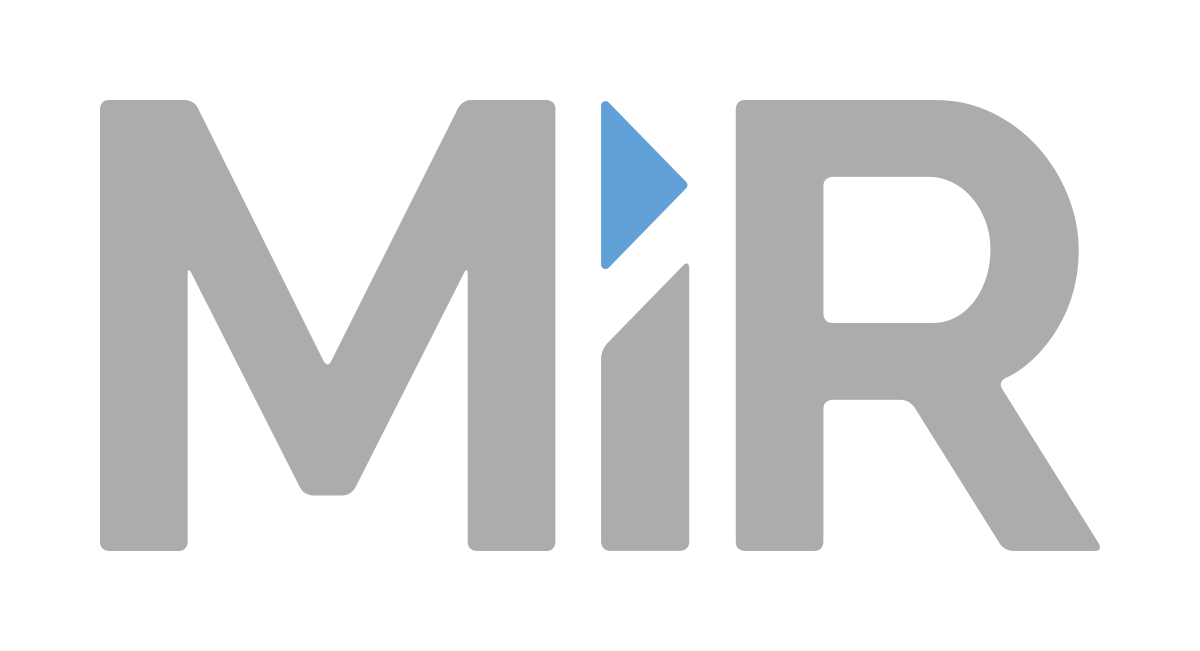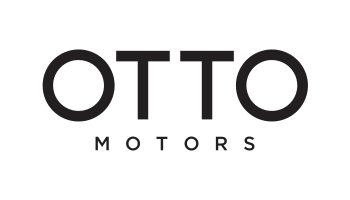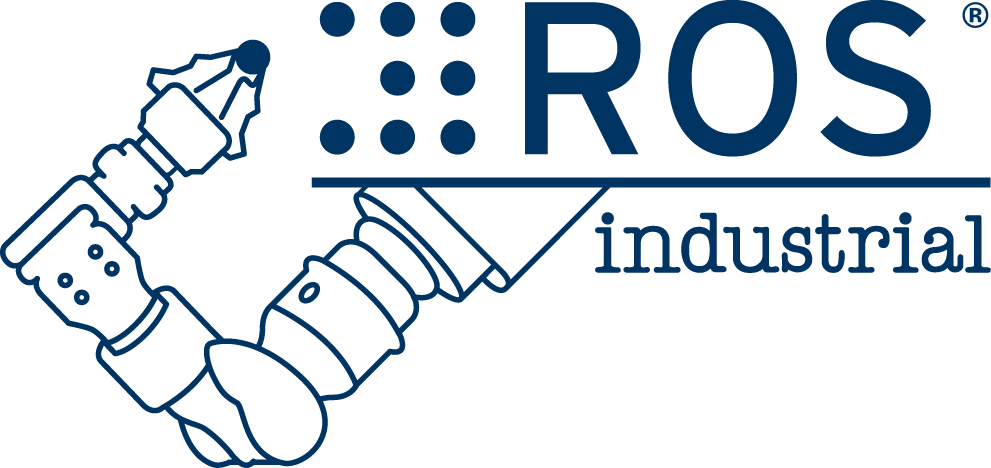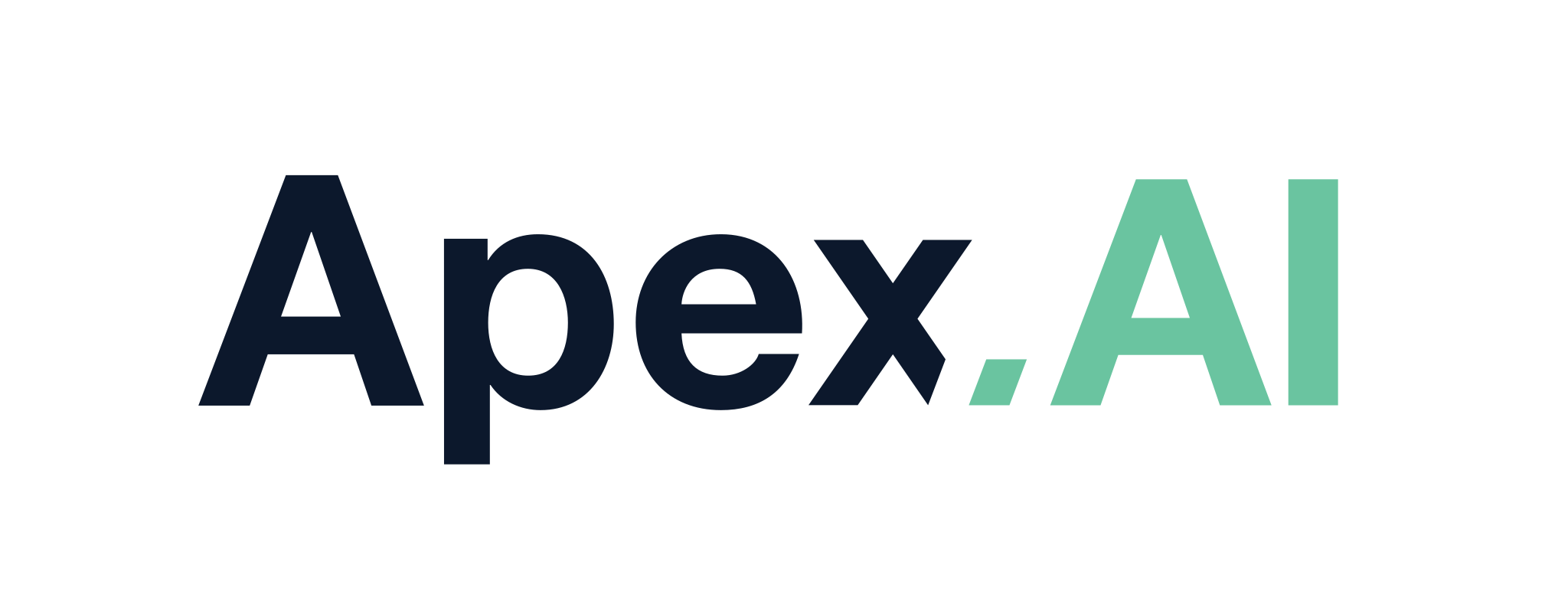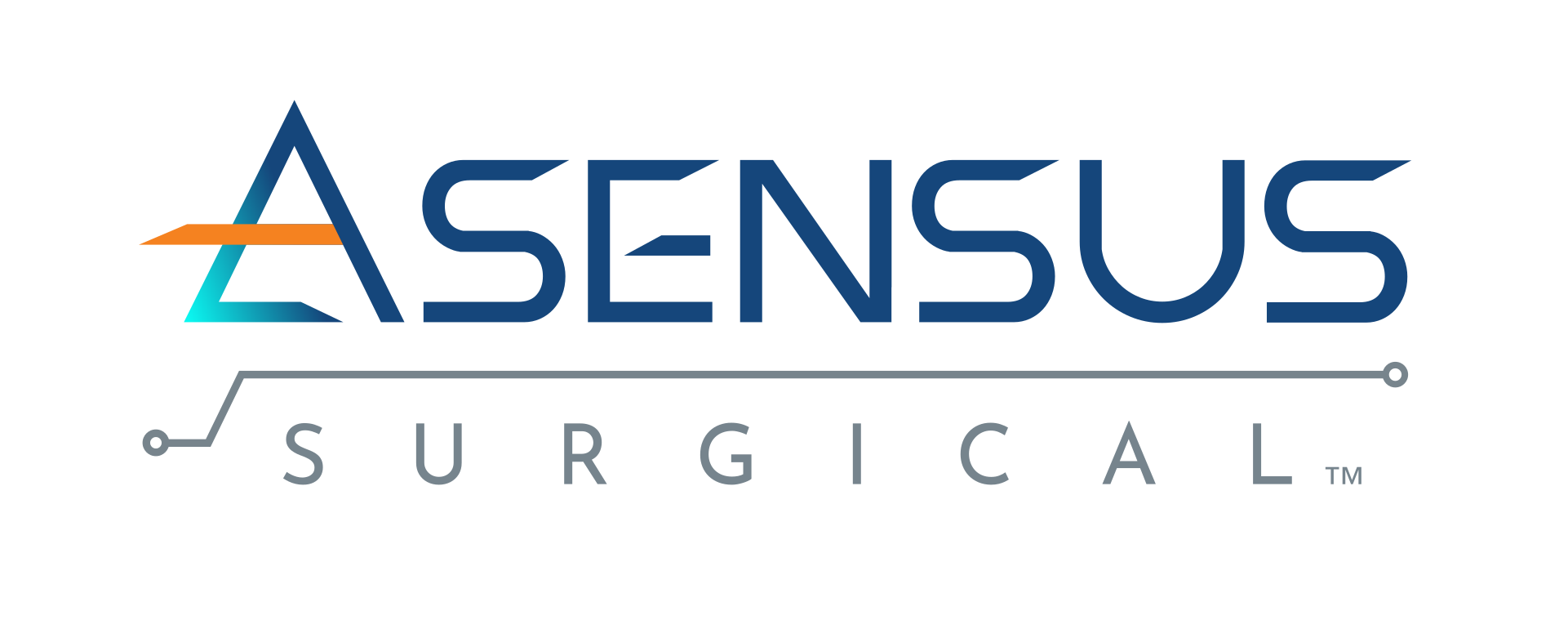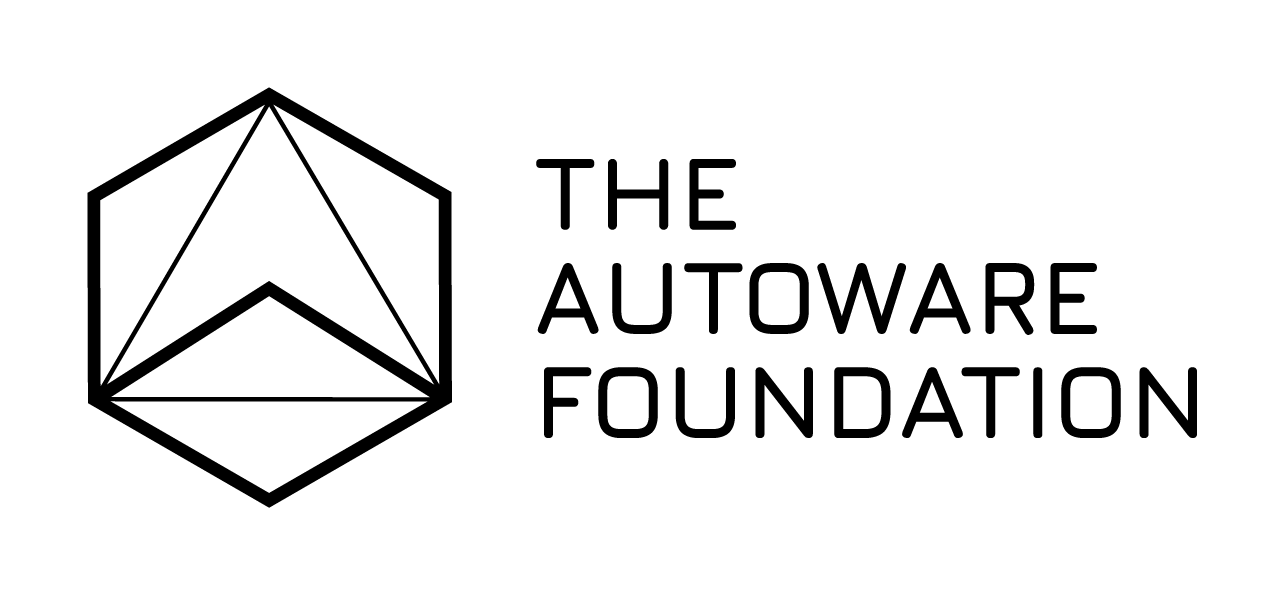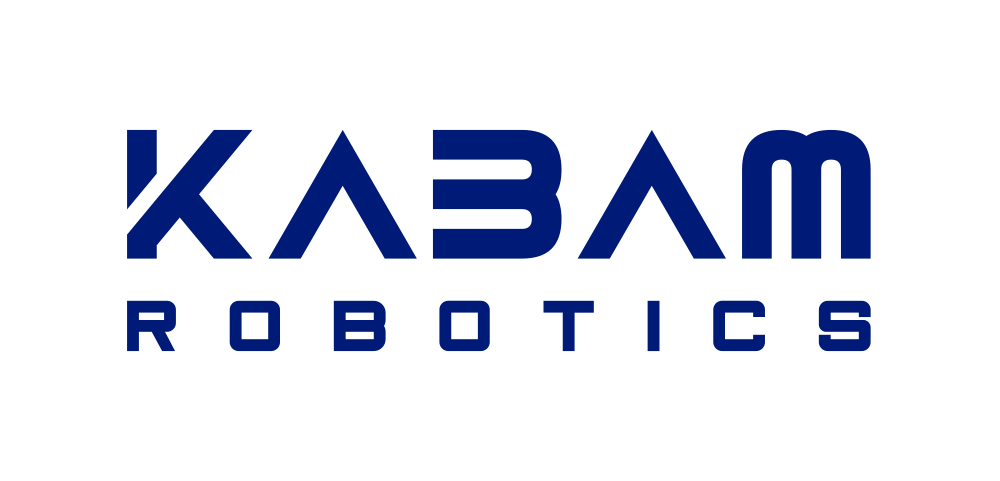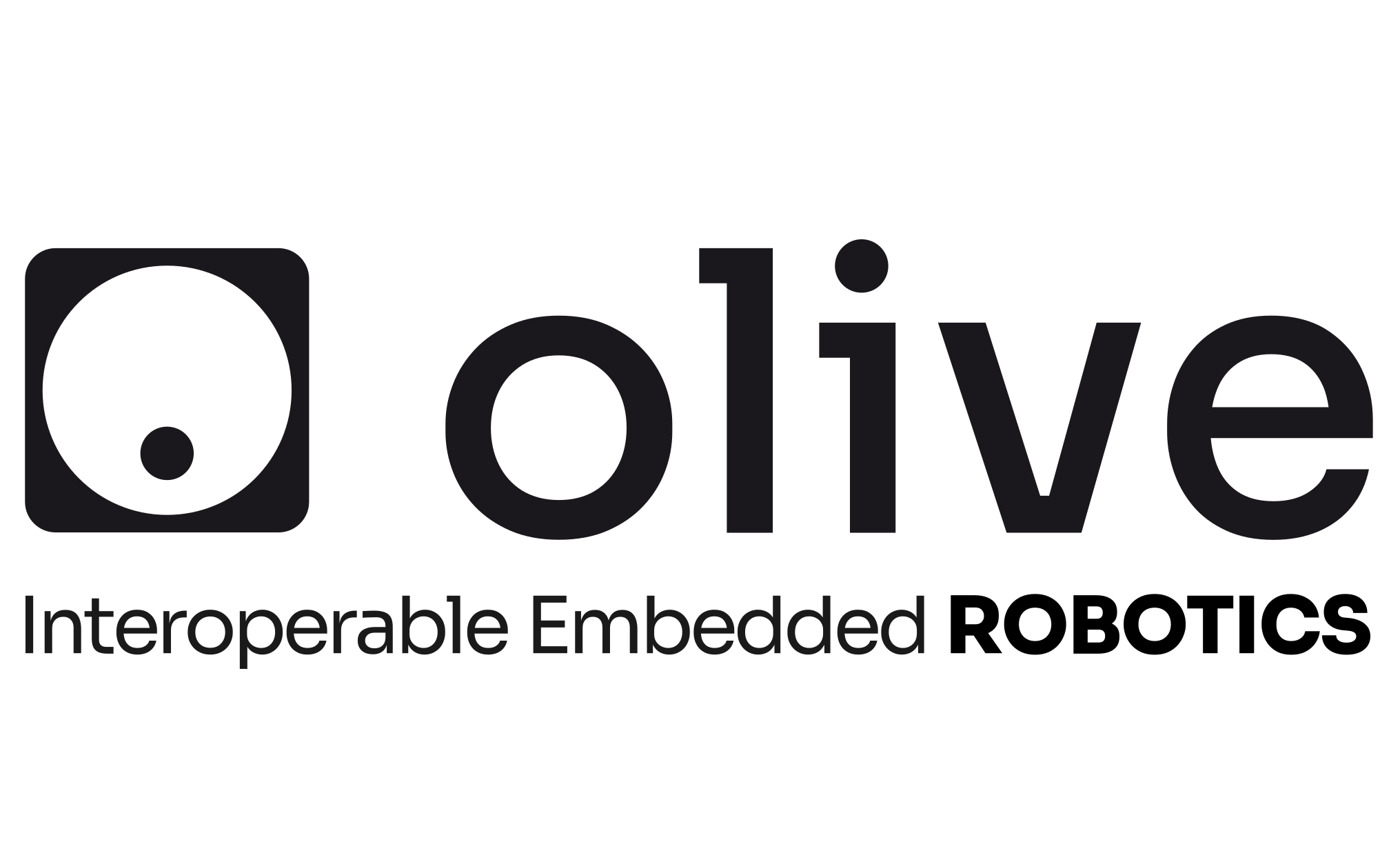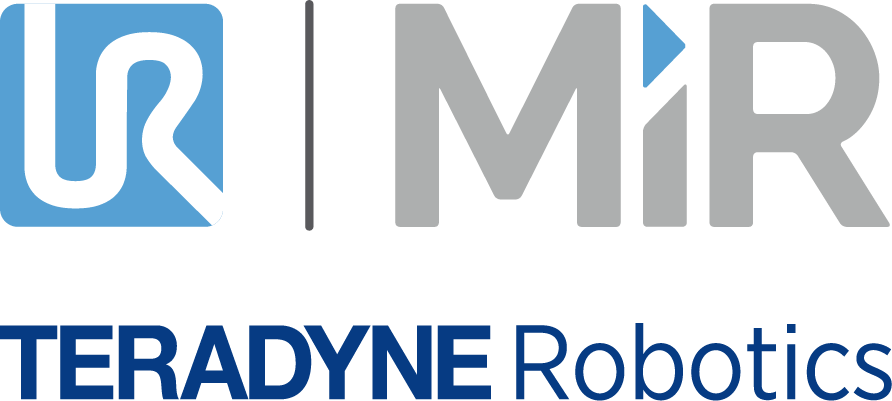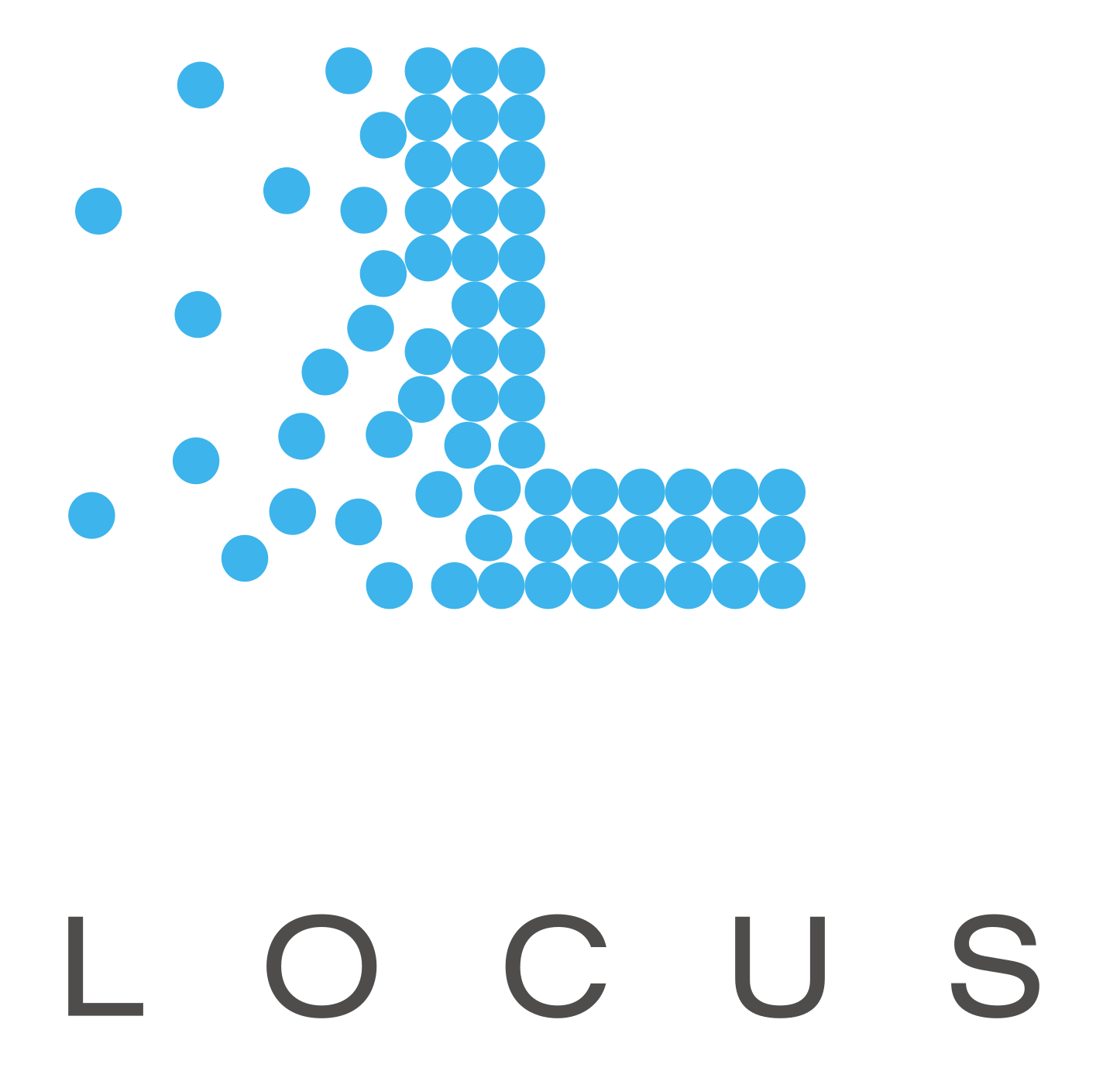ROSCon 2024
Odense, Denmark
October 21st - 23rd, 2024
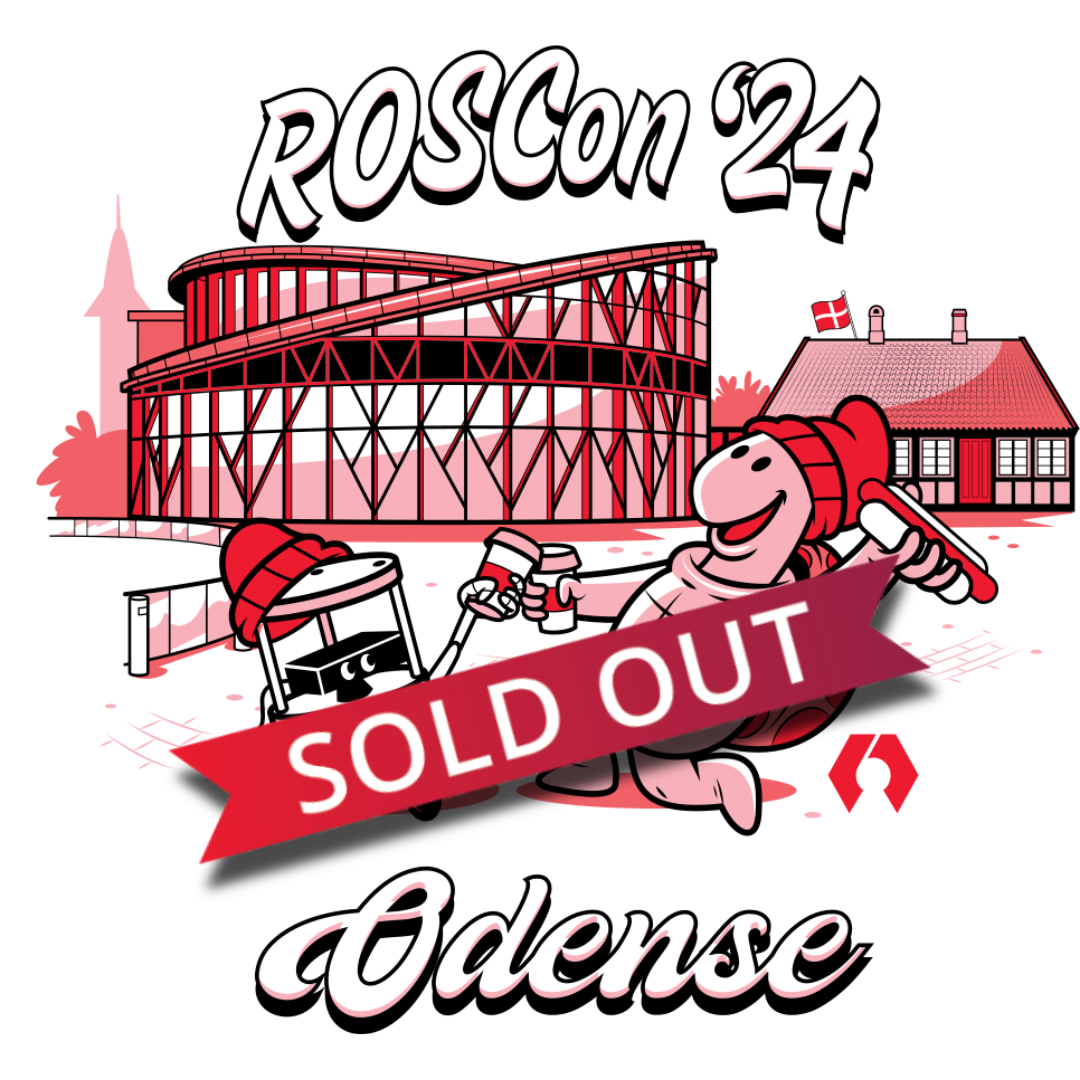
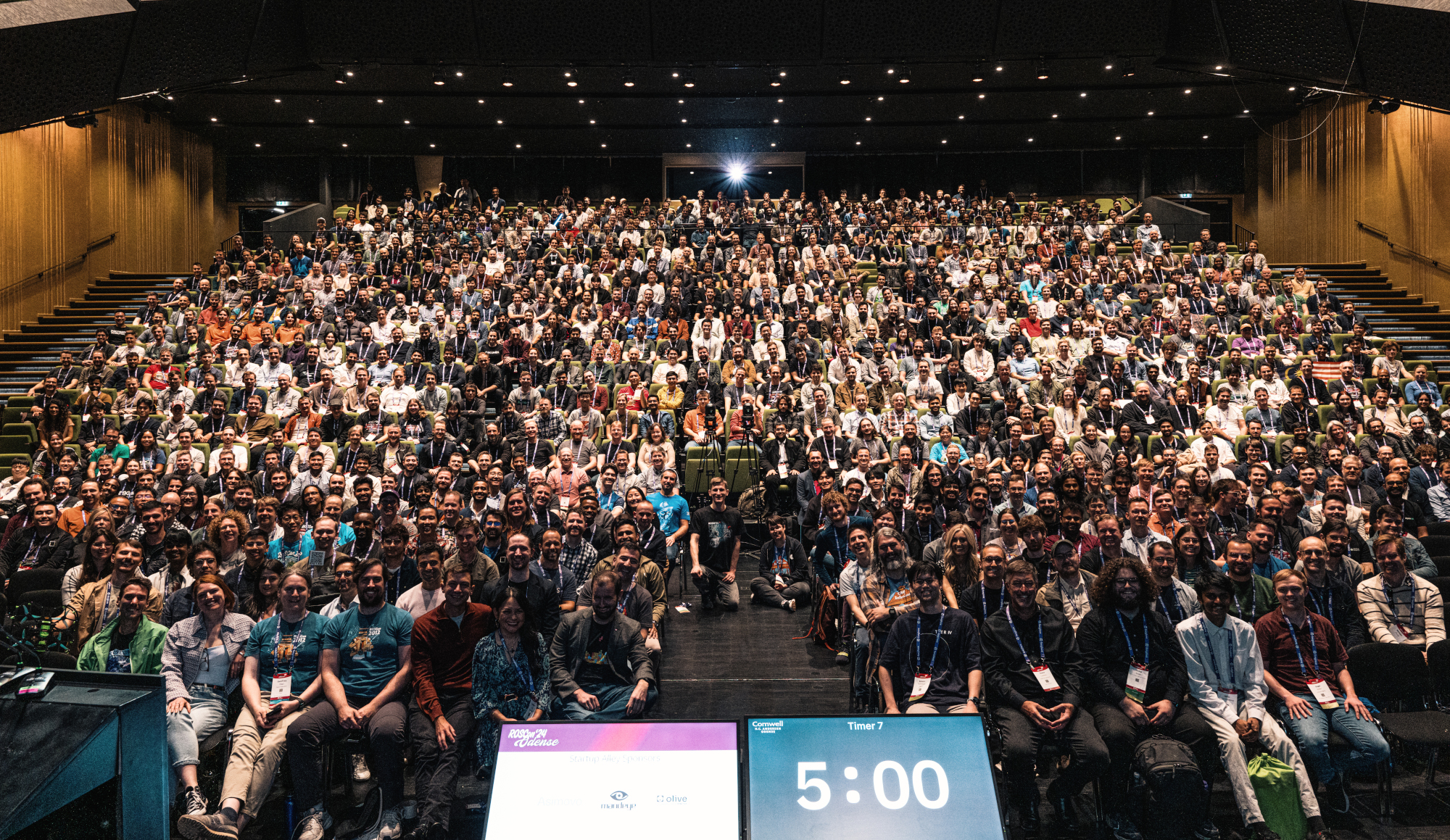
ROSCon 2024 will be held in Odense, Denmark on October the 21st to 23rd, 2024. ROSCon 2024 is a chance for ROS developers of all levels, beginner to expert, to spend an extraordinary three days learning from and networking with the ROS community. Get tips and tricks from experts and meet and share ideas with fellow developers.
ROSCon is a developers’ conference, in the model of PyCon and BoostCon. Following the success of our past events, this year’s ROSCon will be our thirteenth ROSCon and held in Odense, Denmark. Similar to previous years, the three-day program will comprise a mixture of workshops, technical talks, and tutorials that will introduce you to new tools and libraries, as well as teach you more about the ones you already know. The bulk of the program will be presentations, along with panel discussions, lightning talks, demonstrations, and workshops.
We aim for ROSCon to represent the entire ROS community, which is global and diverse. Whoever you are, whatever you do, and wherever you do it, if you’re interested in ROS, then we want you to join us at ROSCon. We encourage women, members of minority groups, and members of other under-represented groups to attend ROSCon. We expect all attendees to follow our code of conduct.
If you have questions, concerns, or ideas for ROSCon 2024, please contact the executive committee.
We also welcome suggestions for what else we can do to encourage more participation. Contact us if you have ideas that you’d like to share.
Dates
ROSCon 2024 Key Dates
Call for Proposals circulated
March 15th, 2024
Workshop submission deadline
May 7th, 2024
Diversity Scholarship application deadline
April 5th, 2024
Proposal submission deadline
June 3rd, 2024
Proposal acceptance notification
July 8th, 2024
Ticket Sales Begin
June 3rd, 2024
Early registration deadline
September 3rd, 2024
Late registration starts
October 1st, 2024
Sponsors
ROSCon 2024 Sponsors
Platinum Sponsor
Gold Sponsors
Silver Sponsors
Bronze Sponsors
Startup Alley Sponsors
Live Stream and Video Archive Sponsor
Mobile App Sponsor
Lunch & Reception Sponsors
Lunch & Reception Sponsors - Day 1
Lunch Sponsor - Day 2
Diversity Scholarship Sponsors
Map of Sponsor Exhibits
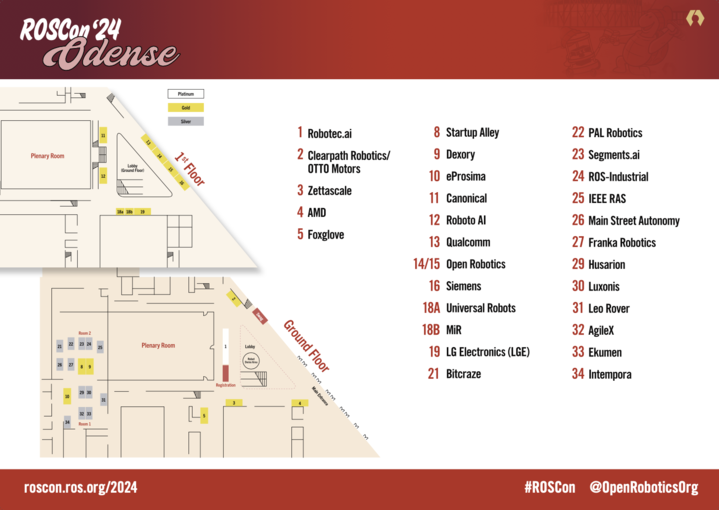
attend
ROSCon 2024 is Sold Out !
We’re excited to announce that ROSCon 2024 has officially sold out! The incredible response from the ROS community has been amazing, and we wish we could accommodate everyone. While in-person attendance is no longer possible, we’re pleased to offer a free live stream of the event on the day of the conference. The live stream link will be available on this website on the day of the event. For any questions or concerns, please contact us at roscon-2024-ec@openrobotics.org. Thank you for your understanding!
ROSCon Registration
Space at ROSCon is limited, and registration is on a first-come, first-serve basis, We recommend you register as soon as possible as ROSCon registration often sells out a few weeks before the event. Workshop seating is limited, and popular workshops sell out quickly. Discounted registration fees are available for early registration and students (see the table).
ROSCon Registration Rates
| Ticket Type | Price (USD) | Available Dates |
|---|---|---|
| Early Student | $250 | Until 2024-09-03 |
| Early General | $525 | Until 2024-09-03 |
| Regular Student | $350 | 2024-09-04 to 2024-09-30 |
| Regular General | $675 | 2024-09-04 to 2024-09-30 |
| Late Student | $425 | After 2024-10-01 |
| Late General | $775 | After 2024-10-01 |
| Workshops - Student | $50 + Conference Registration | Until 2024-10-18 while supplies last |
| Workshops - Non-Student | $100 + Conference Registration | Until 2024-10-18 while supplies last |
Hotel Information
For ROSCon 2024 we have partnered with multiple hotels in Odense to make sure we have suffient space for all of our guests. All of our partner hotels offer discounted rates for ROSCon 2024 but vary in terms of amenities, room sizes, and proximity to the Odeon Theather.
| Name | Location | Price | Available Dates | Registration Date | Details |
|---|---|---|---|---|---|
| Comwell | Claus Bergs Gade 7, 5000 Odense | DKK 1298-1548 ~$189-222 |
2024-10-18 2024-10-25 |
2024-10-04 | Use this link with code BC-ROSCON2024 Book before 2024-09-23 |
|
|
|||||
| First Hotel Grand | Jernbanegade 18, 5000 Odense | DKK 1295 ~$189 |
2024-10-21 2024-10-23 |
2024-08-21 | Use this link |
| Scandic Hotel | Hvidkærvej 25, 5250 Odense | DKK 1095-1895 ~$159-276 |
2024-10-19 2024-10-24 |
2024-10-04 | email Odense@scandichotels.com and refer to ROSCon 2024. |
| Knudsens Gaard | Hunderupgade 2, 5230 Odense | DKK 950-1350 ~$138-197 |
2024-10-18 2024-10-25 |
2024-10-04 | Use this link with code ROSCON Email: info@knudsensgaard.dk |
| CABINN | Østre Stationsvej 7 5000 Odense | DKK 894 ~$130 |
2024-10-21 2024-10-23 |
2024-08-21 | Website Code: BLKROSC24 Phone: 1856441 ROSCon |
| Hotel Odeon | Odeons Kvarter 11, 5000 Odense | DKK 1125-1825 ~$162-263 |
2024-10-21 2024-10-23 |
2024-10-04 | Use this link with code "roscon24" |
| City Hotel Nattergalen | Hans Mules Gade 5 DK-5000, Odense | DKK 850-1150 ~$122-166 |
2024-10-20 2024-10-23 |
2024-10-04 | |
| Hotel Odense | Ørbækvej 350, Odense SØ | DKK 1175-1525 ~$169-220 |
2024-10-20 2024-10-24 |
2024-10-04 | |
| Milling Ansgar | "Østre Stationsvej 32 5000 Odense" | DKK 1125 ~$162 |
2024-10-20 2024-10-23 |
2024-08-21 | Email: ansgar@millinghotels.dk, or use code "ROScon24" during registration. |
| Milling Windsor | Vindegade 45, 5000 Odense | DKK 1125 ~$162 |
2024-10-20 2024-10-23 |
2024-10-04 | Email: windsor@millinghotels.dk, or use code "ROScon24" during registration. |
| Milling Plaza | Østre Stationsvej 24, 5000 Odense | DKK 1125 ~$162 |
2024-10-20 2024-10-23 |
2024-10-04 | Email: plaza@millinghotels.dk, or use code "ROScon24" during registration. |
Event Location & Travel
ROSCon 2024 will be held at the The Odeon concert hall in Odense, Denmark. The event address is: Odeons Kvarter 1, 5000 Odense, Denmark. The venue is a short walk from the Odense Train station.
–Google Maps–Open Street Maps–
- Air travel to Odense is serviced by Copenhagen Airport (CPH).
- Train travel to Odense is supported by Rejseplanen.
Rail Travel Information
- From Copenhagen International Airport (CPH) to Copenhagen Central Station (København H):
- Departure Location: Copenhagen Airport (Kastrup Station).
- Train Type: Regional or Intercity train.
- Direction: Take any train heading towards Copenhagen Central Station (København H). This journey usually takes around 12-15 minutes.
- Frequency: Trains run frequently, roughly every 10-15 minutes.
- From Copenhagen Central Station to Odense:
- Departure Location: Copenhagen Central Station (København H).
- Train Type: Intercity or Regional (DSB).
- Direction: You will need to board a train heading towards Odense. Many trains travel from Copenhagen to various destinations across Denmark, so check the departure boards for trains heading towards Odense Station.
- Duration: The trip from Copenhagen Central Station to Odense takes about 1 hour 15 minutes to 1 hour 45 minutes, depending on whether it is an InterCity or a Regional train.
- Frequency: Trains to Odense run approximately every hour.
- Arrival in Odense:
- Arrival Location: Odense Station (Odense Banegård Center).
- Once you arrive in Odense, you can continue to your final destination within the city via bus, taxi, or walking.
- The host hotel, Comwell HC Andersen Hotel is 600 meters from the train station.
- How to Purchase Train Tickets:
- You can purchase tickets at the airport, at any DSB ticket machine, or online on the DSB website or app. You can also purchase at Metro ticket stations using Danish coins and major credit cards.
- Consider checking schedules and reserving tickets in advance, especially for Intercity trains.
- From Copenhagen Airport there is a train every hour to Odense.
- Take train from Kobenhavn H to Odense Station – train is 1 hour and 11 minutes – Price: $22-30
- Smaller airports near Odense:
- Sonderborg (SDG) – 62.1 km away
- Billund (BLL) - 86.7 km away
- Aarhus (AAR) – 101.7 km
Related Events and Tourism Information
The city of Odense and Odense Robotics is rolling out the red carpet for ROSCon2024! Odense has created a thriving robotics ecosystem, and a number of local robotics businesses and organizations are planning events before and after ROSCon 2024. We’re recommending that visitors for ROSCon plan to arrive a few days early, and stay a few days after the event to take advantage of all opportunities that Odense has to offer. We’re still making definitive plans, but here are a few of the events that will coincide with ROSCon:
- PRE-CONFERENCE ACTIVITIES: Teradyne (the home of Universal Robots and MiR) will be hosting FREE facility tours (including transportation, refreshments and activities) on Monday, October 21st during Day 0 at ROSCon 2024. Those who opt for half-day workshops or will not be attending workshops can sign up for this activity. Morning and afternoon tours are available.
- Facility/lab tours of robotics companies based in Odense.
- City-hosted events and walking tours.
- A mixer hosted by the city of Odense and other local robotics companies.
- October 23rd thru 26th – the International Conference on Social Robotics
- October 24th thru 25th – ROS Industrial EU Conference
For general tourist information about the Odense region we recommend these resources:
Program
ROSCon Schedule
🎉 Lots of events are happening before, during, and after ROSCon! 🎉
See our related events section for more information.
ROSCon Workshops
October 21st, 2024
You asked for it, and we listened! We’ve doubled the number of ROSCon workshops this year!
ROSCon workshops are available for an additional fee when you register for ROSCon 2024. Space is limited, and workshops often sell out, so make sure to register early!
ROSCon birds of a feather meetings and other community networking events are free for all ROSCon attendees. On October 21st, we are only able to provide lunch for registered workshop participants.
| Room | Time | Workshop |
|---|---|---|
| 105/106 | Morning 8:00 - 12:00 |
[SOLD OUT] Manipulate with MoveIt Like a Pro
Stephanie Eng -- Otto by Rockwell Automation Henning Kayser, Sebastian Jahr -- PickNik Robotics In an increasingly-automated world, robotic manipulation is becoming an ever-more important topic. MoveIt is the most established tool for motion planning for robot manipulators in ROS. But manipulation is more than just motion planning. It includes task planning, perception, real-time control and much more. Going from a problem definition to an actual motion requires integration of various libraries combined with a dedicated runtime logic that enables reactive behaviors and robust error handling. In this workshop, we are going to teach you how to design and implement an architecture to solve complex manipulation tasks with one (or more) robots. You will learn how to make use of existing open-source frameworks like MoveIt and leverage powerful concepts like behavior trees. ⓘ More Information |
| 105/106 | Afternoon 13:00 - 17:00 |
[SOLD OUT] Tool Path Planning for Manipulators
Michael Ripperger -- ROS-Industrial / Southwest Research Institute Tool path planning is a critical step in enabling robotic manipulators to perform complex manufacturing tasks, such as surface inspection, painting, sanding, etc. This process becomes increasingly difficult when generating tool paths from surface reconstructions of objects perceived with sensors rather than perfect CAD models. This workshop will teach you how to utilize the ROS-Industrial repository Noether for generating tool paths on arbitrary mesh surfaces. We will experiment with strategies for processing input meshes (e.g., segmentation, smoothing), producing different types of tool paths (e.g., raster, edge), and adding process-specific modifications to tool paths. We will also create custom tool path planner modules to show how the framework can support novel end-user applications. Finally we will explore how the tool path planning components fit into the context of a full robot application through a virtual demo of the ROS-Industrial Scan ‘N Plan system. ⓘ More Information |
| 200 | Morning 8:00 - 12:00 |
[SOLD OUT] Hand-Held Mobile Mapping System for Large Scale Surveys
Janusz Będkowski -- Polish Academy of Science Michał Pełka -- Michał Pełka Consulting We present an open-source software toolbox for large-scale 3D mapping using an open-hardware measurement device. It is dedicated to education, research, surveying, and robotic system deployment. This software is composed of three components: LIDAR odometry, single-session refinement, and multi-session refinement. Data refinement uses a pose-graph loop closure technique and an Iterative Closest Point algorithm to minimize the error of the edge. The toolbox allows performing loop closures in a semi-automatic way. The results are 3D point clouds in LAZ data format (compressed LAS - LIDAR Aerial Survey). We will show how to collect and process ROS bags and ground truth data for ROS-based LIDAR SLAMs benchmarking. We will bring some systems for data collection during the workshop. ⓘ More Information |
| 200 | Afternoon 13:00 - 17:00 |
[SOLD OUT] Something big is coming in ros2_control: Fun With Controllers
Dr. Denis Stogl -- Stogl Robotics Consulting Bence Magyar -- Locus Robotics If you already know that the ros2_control framework acts as a Kernel for ROS 2 robotics systems you are using but need help with application complexity, then this workshop is for you. The workshop covers the use of ros2_control controllers in products from various industries and shows solutions for all the little issues when running 24/7. You will get a practical overview of concepts like controller chaining - used for cascade control and real-time state estimators; and asynchronous and “side-load” controllers that enable you to run complex calculations without jitter in your control loops. We expect your active involvement! ⓘ More Information |
| K2-Koncerthus | Full Day 8:00 - 17:00 |
[SOLD OUT] Hands-on with ROS 2 Deliberation Technologies
Christian Henkel -- Bosch Research Sebastian Castro -- The AI Institute Davide Faconti -- Dexory David Oberacker -- FZI Research Center for Information Technology Prof. David Conner -- Christopher Newport University Matthias Mayr -- Lund University & RiACT The workshop offers hands-on exploration of task planning and behavior modeling within ROS 2. Participants engage in solving robotics problems using various task planning and behavior definition technologies including Behavior Trees, Hierarchical Finite-State Machines, Task Planning, and Verification and Validation. Expert moderators will guide participants through the implementation process, ensuring ample opportunity for understanding and hands-on practice with each technology. The schedule is balanced to allow sufficient time for introductory presentations, hands-on implementation sessions moderated by maintainers of the respective technologies - BehaviorTree.CPP, FlexBE, SkiROS2, and the CONVINCE toolchain - and interactive discussions. This way, attendees will have the chance to compare and contrast the different deliberation technologies, gaining insights into their practical applications and nuances. ⓘ More Information |
| 207 | Full Day 8:00 - 17:00 |
[SOLD OUT] Demystifying ROS 2 Networking
Tony Baltovski, Hilary Luo, Luis Camero, & Roni Kreinin -- Clearpath Robotics by Rockwell Automation Join us as we break down ROS 2 networking: How does it work? How do you configure it? How do you troubleshoot it? From foundational networking concepts to advanced robot systems, gain hands-on experience setting up your computer for different configurations and test them out on robots. Get insight into troubleshooting single and multi-robot networks with real case studies. This workshop will focus on the default RMW Implementation, Fast DDS but the information is transferable. Participants require a computer running Ubuntu 22.04 (native or vm) running ROS 2 Humble and must install certain packages (to be announced over email) before arriving. No prerequisite knowledge required of networking but basic Linux and ROS 2 publisher / subscriber experience expected. ⓘ More Information |
| 107 | Full Day 8:00 - 17:00 |
[SOLD OUT] Introduction to ROS and Building Robots with Open-Source Software
Geoff Biggs -- Open Robotics Katherine Scott -- Intrinsic This workshop will provide attendees with an introduction to building robots using open-source software, particularly using ROS across various industries and applications, and applying open-source contribution, governance and licensing concepts. Those new to ROS will learn the fundamental concepts through a mixture of talks and hands-on practical exercises. Experienced members of the community will be on-hand to assist attendees with any problems they encounter, and provide answers to questions attendees may have. The workshop will also feature talks on the OSRF's other projects such as Gazebo, Open-RMF and the Turtlebot. ⓘ More Information |
| 208 | Full Day 8:00 - 18:00 |
Birds of a Feather & Networking Sessions
A full list of Birds of a Feather session can be found here. All ROSCon attendees are free to attend birds of a feather and networking sessions on the first day of ROSCon at no addititional cost. However, lunch will only be provided for registered workshop attendees. If you would like to host a birds of a feather session please use this sign up using his Google form. A full birds of a feather session agenda will be published prior to the event. |
| 209 | Full Day 8:00 - 18:00 |
Birds of a Feather & Networking Sessions
A full list of Birds of a Feather session can be found here. All ROSCon attendees are free to attend birds of a feather and networking sessions on the first day of ROSCon at no addititional cost. However, lunch will only be provided for registered workshop attendees. If you would like to host a birds of a feather session please use this sign up using his Google form. A full birds of a feather session agenda will be published prior to the event. |
Day One, October 22nd, 2024
All times are Central European Summer Time (UTC+2)
9:00 CEST
Opening Remarks
Room: Large Hall 4
Geoff Biggs
(Open Robotics)
Brian Gerkey
(Intrinsic)
Kickoff of our ROSCon 2024 technical program with a special welcoming statement from the mayor of Odense, Peter Rahbæk Juel.
📹 Watch
9:15 CEST
Saving lives sooner: leveraging ROS 2 for end-stage kidney disease
ROS in medicine Room: Large Hall 4
Deanna Hood
(Vexev)
Just how is Vexev’s new approach to non-invasive vascular monitoring overcoming the drawbacks of today’s sonography practices? This talk takes you through how our safe & instant 3D vascular scans are made possible by fusing ultrasound imaging with the autonomous robotics algorithms that you’ve come to know and love. Get a behind-the-scenes look into our progress putting the Wave robot directly into dialysis clinics and helping over half a million patients in the USA living with end-stage kidney disease. We’re excitedly on our way to an FDA submission and proud to showcase how the ROS community has helped make it possible!
🌐 More Info
📹 Watch
🗒️ Slides
9:55 CEST
The State of ROS: Beneath the Kilt
ROS in medicine Room: Large Hall 4
Chris Lalancette
(Intrinsic)
In this talk the ROS PMC project leader Chris Lalancette will provide an overview of governance changes in ROS under OSRA, a report on the health of the ROS community, an overview of new features in Jazzy Jalisco, what is being planned for Kilted Kaiju, and what long-term goals the ROS project is working towards.
🌐 More Info
📹 Watch
10:20 CEST
RMW Zenoh: An alternative middleware for ROS 2
ROS in medicine Room: Large Hall 4
Yadunund Vijay
(Intrinsic)
Julien Enoch
(ZettaScale Technology)
ROS 2 has a modular architecture which allows for the middleware employed to be swappable at runtime. Until recently only DDS-based middlewares had been officially supported. With Jazzy Jalisco we’re introducing an alternative option, rmw_zenoh, built on the Zenoh protocol. In this talk we will introduce Zenoh, describe how it differs from DDS, and discuss the implementation of rmw_zenoh along with its configuration possibilities. Lastly we will detail rmw_zenoh’s performance characteristics and outline future improvements. While DDS is here to stay, we believe supporting an alternative middleware like Zenoh is a positive step in offering more flexibility to ROS users.
🌐 More Info
📹 Watch
🗒️ Slides
10:40 CEST
Coffee Break
Room: Foyer
11:10 CEST
The State of the Infrastructure
ROS-powered dogs Room: Large Hall 4
Steven Ragnarök (Intrinsic)
Although it is not as publicly visible as our other projects, the Infrastructure project is one of the most crucial elements of the success of our open-source robotics work. Come to this talk to learn what the infrastructure is that supports all our other projects, how it's maintained, and what the project team has been up to recently.
📹 Watch
🗒️ Slides
11:30 CEST
In the Spot Light: Controlling Spot with ROS 2
ROS-powered dogs Room: Large Hall 4
Tiffany Cappellari
(The AI Institute)
The AI Institute aims to solve the most important and fundamental problems in robotics and AI. Our work incorporates AI, machine learning, control systems, dexterity, mobility, perception, and hardware design, as well as the ethics and societal impact of robotics and AI. This talk will introduce our various open source ROS 2 packages for controlling Boston Dynamics' Spot, discuss recent changes and improvements to our ROS 2 Spot driver, and show the audience how they can get started with using ROS 2 to communicate with Spot.
🌐 More Info
📹 Watch
🗒️ Slides
11:40 CEST
Panel: Successfully Deploying ROS 2 Into Production
Panel Room: Large Hall 4
Guillaume Doisy (Dexory)
Seungmin Bae (LG Electronics)
Xenia Scholl (AITonomi)
Moderator: Christine Fraser-Boer (Asimovo)
📹 Watch
12:10 CEST
Lunch Break
Room: Various Locations
13:40 CEST
Executors in ROS 2
Execution and control with ROS 13:40 - 14:00 CEST
Michael Carroll
William Woodall
(Intrinsic)
In ROS 2, execution management is handled by the concept of “Executors”. An Executor uses one or more threads of the underlying operating system to invoke the callbacks of subscriptions, timers, services, and actions based on incoming messages and events. This talk will cover the basics of the data structures and control flow of the executors in rclcpp, the ROS 2 C++ client library. In addition to the design of the executors, we also want to share observations about choosing an executor that best matches your application, as well as recent improvements in Iron and Jazzy.
🌐 More Info
📹 Watch
🗒️ Slides
How to Use a Dragon's Algorithm: Integrating Drake with MoveIt 2
Manipulators 13:40 - 14:00 CEST
Aditya Kamireddypalli
(University of Edinburgh)
Sebastian Jahr
(PickNik Robotics)
In this talk, we discuss incorporating optimization-based motion planning capabilities from Drake into MoveIt 2. MoveIt 2 is a motion planning framework that enables setting up a complete ROS 2 pipeline from perception to planning to trajectory execution. Drake is a toolbox for model-based design offering state-of-the-art optimization capabilities for motion planning, which is a limitation in the motion planners currently available in MoveIt. Using MoveIt’s plugin-based architecture, we demonstrate a motion planning pipeline including inverse kinematics and trajectory optimization algorithms from Drake. Guided by our results, we present a roadmap to continue incorporating Drake into the ROS 2 ecosystem.
🌐 More Info
📹 Watch
🗒️ Slides
14:00 CEST
The Multithreaded Events Executor
Execution and control with ROS 14:00 - 14:10 CEST
Janosch Machowinski
(Cellumation GmbH)
The Multithreaded Events Executor is an evolution of the recently added Events Executor. This talk gives a in deep dive into why it exists, the design and workings of it.
🌐 More Info
📹 Watch
🗒️ Slides
More than just an actuator -- Better ROS support for a manipulator
Manipulators 14:00 - 14:20 CEST
Rune Søe-Knudsen
(Universal Robots A/S)
Felix Exner
(FZI Research Center For Information Technology)
In ROS robot manipulators are often degraded to a 6-degrees-of-freedom actuator. However robot arms like the ones from Universal Robots support many more features than just executing streamed joint commands. We strive towards integrating more robot-features into ros2_control such as live-scaling of trajectory speed, trajectory interpolation on the controller and a couple of force-controlled operations. With these changes we want to improve versatility, reliability and robustness when using Universal Robots manipulators in your ROS project. However, many of the changes could potentially be relevant for a larger ROS community.
🌐 More Info
📹 Watch
🗒️ Slides
14:10 CEST
Accelerating Robotics Development with Embedded Linux
Execution and control with ROS 14:10 - 14:30 CEST
Robert Woolley
(Wind River)
Modern Embedded Linux workflows are able to use containers and CI/CD to make robotics development faster and easier. One may leverage cross-platform builds to enable robots using smaller and more diverse hardware. This talk will demonstrate how a hobbyist can quickly get started developing their first ROS 2 application with SDKs generated by the Yocto Project. It will also touch on how an emerging startup can set up their own infrastructure with GitLab for CI/CD and DevOps in a production environment.
🌐 More Info
📹 Watch
🗒️ Slides
A ROS 2 Package for Dynamic Collision Avoidance Based On On-Board Proximity Sensors for Human-Robot Close Interactions
Manipulators 14:20 - 14:30 CEST
Liana Bertoni
(IIT & Univ. of Pisa)
In human-robot shared environments, onboard proximity sensors have been recognized as a promising tool for monitoring the surrounding robot workspace. Unexpected collisions can then be spoiled and online evaded by continuously correcting the robot's actual trajectory while maintaining a safe human-robot coexistence to enhance human-robot close interactions. For this purpose, an open-source ROS 2 package for online dynamic collision avoidance based on onboard sensors has been developed and presented. In this talk, we introduce the general idea, package functionalities, how to use explanations, and real demonstrations on different robots.
🌐 More Info
📹 Watch
🗒️ Slides
14:30 CEST
Real-time ROS 2 applications made easy with cactus-rt
Execution and control with ROS 14:30 - 14:50 CEST
Shuhao Wu
(NVIDIA)
Ensuring real-time behavior is difficult as it typically requires engineers to manually apply specialized programming techniques. This talk introduces cactus-rt: an open-source C++ real-time application framework that aims to lower the bar for developing 1000 Hz ROS applications. This is achieved by automating much of the real-time application setup and providing real-time-safe logging, multi-thread communication, ROS 2 integration, and other necessary components. Advanced tracing also allows for deep inspection of runtime behavior in production. We will demonstrate the ease of application development with cactus-rt and show you how it works internally.
🌐 More Info
📹 Watch
🗒️ Slides
GSplines: Generalized Splines for Motion Optimization and Smooth Collision Avoidance
Manipulators 14:30 - 14:50 CEST
Rafael A. Rojas
(ImFusion Gmbh)
The GSplines and their ROS implementations provide ROS developers with out-of-the-box solutions for optimal smooth motions and smooth obstacle avoidance in ROS and MoveIt. They offer C++ and Python interfaces for algebraically and analytically consistent representation of trajectories, using an architecture based on the calculus of variations, facilitating the construction of complex motion primitives. Additionally, they provide tools for constructing custom motion optimization problems and deliver solutions in MoveIt and ROS.
🌐 More Info
📹 Watch
🗒️ Slides
14:50 CEST
Something big is coming in ros2_control with ROS 2 Jazzy!
Execution and control with ROS 14:50 - 15:10 CEST
Dr. Denis Stogl
(Stogl Robotics Consulting)
Dr. Bence Magyar
(Locus Robotics)
We know you love ros2_control, but… Have you ever wanted to control your robot with data that is not a C++ double value? Annoyed with maintaining data storage in robot drivers? This is solved in ROS 2 Jazzy! Now the framework manages storage for you and even allows you to pass strings to your robot! Plus…there is more! Do you have a fancy AI-based controller or something with inverse dynamics that runs slower than your hardware expects? No problem! If you are keen to learn more about these and other features, you have to be at this presentation!
🌐 More Info
📹 Watch
🗒️ Slides
KOI and EBIKE: Optimizing Kinematics Structures and IK Parameters by Combining REACH and Optuna
Manipulators 14:50 - 15:00 CEST
Marc Bestmann
(German Aerospace Center (DLR))
In this talk, we demonstrate how REACH, a ROS 2 tool for reachability analysis, can serve as a foundation for the automatic optimization of various parameters in robotic setups by integrating it with the Optuna library. Specifically, we introduce two tools that address fundamental issues in robotics: KOI a tool that optimizes kinematic structures to maximize reachability on target objects and EBIKE a tool that facilitates the comparison, evaluation, and optimization of different MoveIt IK solvers in real-world scenarios, thus ensuring the selection of the most efficient solver and its parameters for specific applications.
📹 Watch
🗒️ Slides
A Fuzzy-Matching Trajectory Cache for MoveIt 2
Manipulators 15:00 - 15:10 CEST
Brandon Ong
(Intrinsic)
This talk is about a new trajectory cache for MoveIt 2 that allows you to put and fetch manipulator trajectories, keyed fuzzily on certain start and goal planning parameters.It's been a feature request that's been pending for seven years! The talk will discuss the benefits of using such a cache, how it works, best practices for how to use it, and some limitations and future work to make it a full drop-in solution for production use cases.
PS: The cache "learns" over time (though it ISN'T AND NEVER WAS MACHINE LEARNING).
🌐 More Info
📹 Watch
🗒️ Slides
15:10 CEST
Coffee Break
Room: Foyer
15:50 CEST
iceoryx2: A Journey to Becoming a First-Class RMW Alternative
Embedded and industrial applications 15:50 - 16:10 CEST
Mathias Kraus
(ekxide IO GmbH)
As ROS 2 advances, the demand for high-performance, low-latency communication middleware becomes increasingly critical, especially in autonomous systems and robotics. This talk introduces iceoryx2, the next-gen implementation of the iceoryx middleware leveraging Rust's safety and concurrency features while addressing the limitations of the original C++ version. By eliminating the central daemon and resolving usability issues, iceoryx2 enhances the reliability and efficiency of ROS 2 applications. Attendees will learn about the development motivation, key features, integration as a ROS 2 middleware (RMW) layer, and future prospects. Join us to explore how Rust-based iceoryx2 is becoming a first-class ROS 2 middleware solution.
🌐 More Info
📹 Watch
🗒️ Slides
Optimizing Gazebo simulation: Challenges in building complex simulation environments.
Simulation, visualisation and testing 15:50 - 16:10 CEST
Ian Chen
Cole Biesemeyer
(Intrinsic)
Building a complex simulation environment that runs efficiently in real time can be challenging. This presentation will go over typical examples of performance bottlenecks that users face when running simulations in Gazebo. We will demonstrate how we created large complex environments in different applications, and show examples of how we optimized performance. This talk will show new Gazebo features implemented to improve physics performance, including mesh convex hull decomposition, collision detection optimizations, as well as recent improvements to the bullet-featherstone physics plugin. We will introduce a new tool, named ColliderGen, designed to help users create efficient collision geometries.
🌐 More Info
📹 Watch
🗒️ Slides
16:10 CEST
J1939 CAN Device Support in ROS 2
Embedded and industrial applications 16:10 - 16:30 CEST
Arturo Saucedo
Isaac Blankenau
(USACE ERDC Construction Engineering Research Laboratory)
This talk discusses the development of a generic ROS 2 driver for CAN J1939 devices. Our group is currently involved in heavy equipment autonomy, and as such had to interface with pre-existing CAN J1939 devices onboard heavy equipment machinery. This led to the development of a generic can driver in order to parse sensor data from the heavy equipment. The development of this driver also led to greatly simplified driver development for standalone CAN J1939 devices.
🌐 More Info
📹 Watch
🗒️ Slides
Building Humanoid Robots: Mastering Design and Control with ROS
Simulation, visualisation and testing 16:10 - 16:30 CEST
Luca Marchionni
(PAL Robotics)
This talk highlights how ROS / ROS 2 can be utilized as middleware for the control stack of humanoid robots, covering high-level strategies to low-level actuators. Our goal is to inspire and guide the community in leveraging ROS for humanoid robots, especially given the surge in interest over the past year. PAL Robotics has successfully used ros_control and ros2_control in our primary control stack for both humanoids and mobile manipulators for over a decade, achieving control frequencies up to 2000Hz. We will share our experiences and insights to help others adopt ROS 2 for advanced humanoid robot development.
🌐 More Info
📹 Watch
🗒️ Slides
16:30 CEST
Integration of ETSI ITS messages for V2X communication in ROS
Embedded and industrial applications 16:30 - 16:50 CEST
Jean-Pierre Busch
(Institute for Automotive Engineering (ika) RWTH Aachen University)
In the context of Intelligent Transportation Systems (ITS), the European Telecommunications Standards Institute (ETSI) has standardised message formats for V2X communication between vehicles and digital infrastructure. We propose a ROS package stack that covers the entire chain from receiving ETSI ITS messages in ROS through conversion into dedicated ROS message formats up to visualisation of the messages in RViz. Vice versa, ROS messages can be converted into appropriately coded UDP packets so that they can be transmitted via ITS-G5-Wi-Fi, for example. The automatic generation of the message definitions as well as the conversion functions enable flexible extension of the stack.
🌐 More Info
📹 Watch
🗒️ Slides
URDF Creator: Bridging the Gap Between Learning and Applying ROS 2
Simulation, visualisation and testing 16:30 - 16:40 CEST
Mark Soulier
(Utah State University)
URDF Creator is an open-source project designed to create URDFs in a simple way. This GUI based CAD-like tool allows users to build URDFs, define robot links, joints, sensor parameters, and simulation plugins in 3D. The tool also stores publicly available models and common sensors that can be easily tweaked and used. With easy manipulation of 3D objects, configuration of links and joints, and export capabilities for Gazebo and other high-fidelity simulators, URDF Creator simplifies the idea to robot reality process, making ROS 2 more accessible and engaging for all levels of robotics enthusiasts.
🌐 More Info
📹 Watch
🗒️ Slides
Enabling ROS 2 Benchmarks: A Medical Robotics Perspective
Simulation, visualisation and testing 16:40 - 17:00 CEST
Marco Pedretti
Shashank Sharma
In order to bring ROS 2 to the Medical Robotics world, we want to be able to introspect the timing behavior and resource usage of ROS 2 applications and use these insights in helping to meet the necessary quality and regulatory requirements. In this talk, it will be demonstrated how to practically and effectively profile a ROS 2 reference system, leveraging packages like ROS 2 profiling and tracing.
🌐 More Info
📹 Watch
🗒️ Slides
16:50 CEST
Unlocking the Potential of the Nicla Vision Board with ROS / ROS 2
Embedded and industrial applications 16:50 - 17:00 CEST
Damiano Gasperini
Davide Torielli
(HHCM - Istituto Italiano di Tecnologia)
In the ROS community, many robots utilize low-cost, small-footprint but effective boards to enable multi-sensor functionalities. In the design of our recent robotic end-effector, the DAGANA gripper, we embedded the Nicla Vision board to exploit its camera, IMU, microphone, and distance sensors. To fully leverage these sensory features, we have developed a ready-to-use ROS / ROS 2 package. This open-source software interface facilitates seamless data collection from the various sensors of the board and makes it accessible in no time to any kind of ROS user.
🌐 More Info
📹 Watch
🗒️ Slides
17:00 CEST
We Hate Serial: Experiments using CAN-FD as a transport layer for micro-ROS
Embedded and industrial applications 17:00 - 17:10 CEST
Philip Smith
Nitin Chandrasekhar
(UNC Charlotte)
Come learn about the adventures of getting CAN-FD to run as a transport layer for micro-ROS on the teensy 4.0 and trying to get over-the-air updates via CAN for easy management! We will discuss our robot architecture and why this is a powerful cheap way to run robots.
📹 Watch
🗒️ Slides
Scenario Execution for Robotics: A generic, backend-agnostic library for running reproducible robotics experiments and tests
Simulation, visualisation and testing 17:00 - 17:20 CESTFrederik Pasch
Scenario Execution for Robotics is a backend- and middleware-agnostic library, that enables the robotics community to perform reproducible experiments at scale. Written in Python and built upon the generic scenario description language OpenScenario2 and pytrees, Scenario Execution reads a scenario definition from a file, translates it to a py-trees behavior tree and then executes it. Although Scenario Execution can be used as a pure Python library, it is mainly targeted towards ROS 2. The backend-agnostic implementation allows Scenario Execution to be used with both, robotics simulators such as Gazebo and physical robots, with minimal adaptations necessary in the scenario description file.
🌐 More Info
📹 Watch
🗒️ Slides
17:10 CEST
ROS 2 Gateway to Professional 24/7 Applications
Embedded and industrial applications 17:10 - 17:20 CEST
Dr. Denis Stogl
(Stogl Robotics Consulting)
Sebastian Krauskopf
(Bosch Rexroth)
Integrating ROS 2 into applications with classical industrial automation equipment is still a challenge. For once, because specialized hardware is needed, and secondly because the abstraction for such hardware in ROS 2 is missing. This talk presents a solution for connecting ROS 2 with industrial equipment utilizing the open-source friendly CtrlX Automation platform. CtrlX enables installation of ROS 2 nodes using SNAPs on industrially approved hardware. The combination with other applications, like PLC and EtherCAT, from CtrlX enables simple integration of ROS 2 with industrial automation equipment and standard industrial buses.
🌐 More Info
📹 Watch
🗒️ Slides
17:20 CEST
Transition Time
17:25 CEST
18:15 CEST
📷 Group Photo 📷
18:30 CEST
Reception
Day Two, October 23rd, 2024
All times are Central European Summer Time (UTC+2)
9:00 CEST
Mobile Robotics Scale-up Leveraging ROS
ROS in the warehouse Room: Large Hall 4
Guillaume Doisy
(Dexory)
Marcus Scheunemann (Dexory)
In this talk, we will share the Dexory team's experience of using ROS 2 in production, detailing our journey from a small mobile robot start-up to nearly 100 heavy autonomous mobile robots deployed and maintained in the field. We will cover best practices, challenges, empirical learnings, and key findings. Notably, we will demonstrate how, contrary to popular belief, it is possible to maintain a robust production software stack using the latest version of ROS 2. More than with a fixed ROS 1 stack, this approach requires dedicated safeguarding processes and a commitment to opensource, but the benefits for Dexory have been substantial.
🌐 More Info
📹 Watch
🗒️ Slides
9:40 CEST
The State of Gazebo
ROS in the warehouse Room: Large Hall 4
Addisu Z. Taddese
(Intrinsic)
This talk will delve into the current status of the Gazebo project and its integration with ROS 2. Key topics include the change of distribution mechanism of Gazebo for ROS as well as usability and performance improvements of the ros_gz package. We will also showcase new features available in Gazebo Ionic and explore the project's future plans.
🌐 More Info
📹 Watch
🗒️ Slides
10:05 CEST
The State of Open-RMF
ROS in the warehouse Room: Large Hall 4
Michael Grey
(Intrinsic)
Open-RMF provides an open-source framework for orchestrating multiple devices, including but not limited to individual robots and fleets. A new generation of open source device orchestration is on the way. Learn about how Open-RMF is being reimagined to have granular modularity and an all-encompassing scope.
🌐 More Info
📹 Watch
🗒️ Slides
10:30 CEST
Coffee Break
Room: Foyer
11:00 CEST
Migrating a Mobile Manipulator to ROS 2
ROS 2 migration Room: Large Hall 4
Michael Ferguson
(Robot & Chisel)
Mobile manipulators leverage nearly every aspect of ROS 2, including hardware drivers, perception, calibration, navigation and manipulation. Over the past few years I have been migrating my UBR-1 robot to ROS 2 and blogging about it. This talk will demonstrate the results, highlight available resources and ROS 2 packages, and share numerous learnings about using ROS 2 on mobile manipulators, including some exciting new features and improvements for perception pipelines and sensor drivers in Jazzy Jalisco.
🌐 More Info
📹 Watch
🗒️ Slides
11:20 CEST
Jazzy Jalisco rosbag2 updates and new features
ROS 2 migration Room: Large Hall 4
Michael Orlov
(Apex.AI)
Tomoya Fujita
(Sony Corporation of America)
In this presentation, we will be sharing the updates and new features of rosbag2 for the Jazzy Jalisco release. Recording and replaying ROS 2 data is essential for data analysis, simulation of real environments, and debugging purposes. As ROS 2 is being developed and applied to production and simulation, Rosbag2's role has become more important for those use cases. We will share information about new features or capabilities in Rosbag2, such as configuration, extended options, performance improvement and so on. In addition, we will introduce a new feature for service recording and replay based on service introspection with a demonstration.
🌐 More Info
📹 Watch
🗒️ Slides
11:30 CEST
12:20 CEST
Lunch
Room: Various Locations
13:50 CEST
How is my robot? - On the state of ROS Diagnostics
ROS testing and tools 13:50 - 14:10 CEST
Christian Henkel
(MSc, Bosch Research)
This talk will provide a detailed update on ROS Diagnostics, focusing on recent advancements and new features designed to improve the monitoring and troubleshooting of robotic systems. We will cover the additional common diagnostics tools and features of the framework. Attendees will gain insights into best practices for implementing diagnostics and learn from real-world case studies demonstrating the practical benefits of these improvements. This session is ideal for developers and engineers looking to enhance the reliability and performance of their ROS-based systems.
🌐 More Info
📹 Watch
🗒️ Slides
Scaling Open-RMF from a Test Bench → Lab → Controlled Environment → Production
Scaling up 13:50 - 14:20 CEST
Akash Vibhute
Xi Yu Oh
(Intrinsic)
Open-RMF - an open-source ROS 2-based robot interoperability platform, has been under rapid development in the past few years. In this presentation, we will discuss our experiences and lessons learned in scaling Open-RMF deployments, particularly in the context of a large hospital in Singapore with stringent requirements for availability and cybersecurity. Open-RMF is now serving non-technical end-users (eg. nurses) to orchestrate their automated mobile robot (AMR) operations. We will provide a detailed analysis of the challenges we encountered at each stage of the scaling process, as well as the solutions we implemented and the improvements and additions we made to Open-RMF.
🌐 More Info
📹 Watch
🗒️ Slides
14:10 CEST
Accelerating the CI/CD-to-robot cycle by 10x for 1/10th the cost
ROS testing and tools 14:10 - 14:30 CEST
Ruffin White
(Dexory / White Robotics)
Marcus Scheunemann (Dexory)
This talk presents a case study in accelerating CI/CD at Dexory by improving the DevEx for ROS engineers, while cutting both the time and costs to deploy code to robotic platforms tenfold. By optimizing our container pipelines using advance Dockerfile patterns with the latest BuildKit features, and migrating GitHub Action workflows to self hosted runners using RunsOn, significant reductions in infrastructure overhead was made possible, while simultaneously unifying all Dev Container, CI and production environments, thus streamlining both simulation and real world integration testing via spot EC2 GPU pricing and faster distributed caching using ECR and S3 via AWS.
🌐 More Info
📹 Watch
🗒️ Slides
Open-RMF and the Challenge of Resource Contention in Large-Scale Robot Fleets
Scaling up 14:20 - 14:40 CEST
Arjo Chakravarty
(Intrinsic)
This talk goes into the details of rmf_reservations a new library for resource aware constrained planning for multiple robots that is part of Open-RMF. It solves the problem of constrained resource allocation for a fleet of robots. We start by talking of why this is needed given the current state of Open-RMF. We then go into what we are doing for the next generation system. We will touch on the algorithms used and the high level interface provided and our integration plans so Open-RMF users may use this transparently.
🌐 More Info
📹 Watch
🗒️ Slides
14:30 CEST
r2s: A Terminal User Interface for ROS 2
ROS testing and tools 14:30 - 14:40 CEST
Michael Carroll
Jenn Nguyen
(Intrinsic)
In this talk, we introduce "r2s", a terminal based UI to interact with your running ROS system. The "r2s" tool is inspired by the k9s tool that many use to manage their Kubernetes clusters. Much like k9s, the aim of r2s is to make it easier to navigate, observe and manage your deployed ROS 2 applications in the wild, all from your terminal without any graphical frameworks. We would like to demonstrate the features we have developed while also sharing the road map for future capabilities that would further enhance ROS Power Users’ experience.
🌐 More Info
📹 Watch
🗒️ Slides
14:40 CEST
The Lighthouse project: from Virtual Reality to Onboard Positioning for Robotics
ROS testing and tools 14:40 - 14:50 CEST
Kimberly McGuire
(Bitcraze AB)
In robotics research and development, precise positioning is important. Motion capture systems were used indoors to mimic GPS, but they are expensive and introduce communication bottlenecks. The Lighthouse system (LH), originally developed for virtual reality but we have reverse engineered it to work on a small quadcopter, in particular the 28-gram Crazyflie. LH is significantly cheaper than motion capture systems, portable, and allows precise and onboard positioning. In this talk we will explain the concept of LH and why we believe that this is in particular useful for many other types of robots as well.
🌐 More Info
📹 Watch
🗒️ Slides
ROS in Large-scale Factory Automation
Scaling up 14:40 - 15:00 CEST
Michael Gentner
(BMW AG)
Carsten Braunroth
(Siemens AG)
Despite its wide adoption, ROS has found limited commercial application in large-scale production environments to date. In this joint talk we highlight some of the challenges we faced at BMW trying to deploy ROS at scale. Additionally, ongoing efforts in predevelopment at Siemens that aim at combining ROS and classical automation are introduced. The focus of this talk is however a joint proof-of-concept where a safety-rated Siemens PLC is integrated with a ROS software stack by a flexible software connection. This can pave the way for ROS integration and deployment in industrial automation.
📹 Watch
🗒️ Slides
14:50 CEST
Building system packages with colcon in your own compact buildfarm
ROS testing and tools 14:50 - 15:10 CEST
Scott Logan
(Intrinsic)
The official ROS buildfarms produce .deb and .rpm system packages for ROS packages released into the rosdistro official index. However, some situations call for system packages for ROS packages which can't be released into rosdistro. The buildfarm can already be invoked as a script, but lacks dependency sequencing and repository management. Using colcon's robust extension ecosystem and the ROS buildfarm's script invocations, I have created a tool to produce system packages for any rosdistro which are indistinguishable from those built on the official farms, with only a few commands and no deployments necessary.
🌐 More Info
📹 Watch
🗒️ Slides
Enhancing Robotic Communication & Scalability with Topic Keys in ROS 2
Scaling up 15:00 - 15:10 CEST
Raúl Sánchez-Mateos Lizano
(eProsima)
This talk will explore the Topic Keys feature from DDS now available in ROS 2, which improves data distribution efficiency and scalability of robotic systems. By using unique identifiers, Topic Keys consolidate multiple data streams on a single topic, optimizing resource usage and bandwidth. Benefits include better history management, lower resource utilization, and precise message filtering. The presentation will feature practical implementation examples and live demonstrations, showcasing the enhanced scalability and performance that Topic Keys offer.
📹 Watch
🗒️ Slides
15:10 CEST
robot_folders -- your favorite meta-workspace manager
ROS testing and tools 15:10 - 15:20 CEST
Felix Exner
(FZI Research Center For Information Technology)
Convenience is king! We present robot_folders, your new tool to make your life as a ROS developer even more enjoyable. Switch workspaces and even ROS distributions with just one command right at your fingertips!
🌐 More Info
📹 Watch
🗒️ Slides
ROS 2 (and DDS) Compatible Selective Large Data Transfer
Scaling up 15:10 - 15:20 CEST
Nora Sperling
(Technische Universität Braunschweig)
For the latest machine learning applications selectively or incrementally processing large data objects like images, ROS 2's inherent publisher-centric communication of complete application objects lacks efficiency, causing large time and memory overhead. In such cases, the data transport can be organized more efficiently on the subscriber side, supporting an application-driven selective transport of sample data. We present a ROS 2 compatible data management scheme using descriptive virtual objects for sample publication thereby outsourcing the transmission of data to a lean caching protocol. In a realistic use case, the transfer time and volume of relevant data could be significantly reduced.
📹 Watch
🗒️ Slides
15:20 CEST
Afternoon Break
Room: Foyer
16:00 CEST
Agent-based AI Framework for ROS 2
ROS and AI 16:00 - 16:20 CEST
Adam Dabrowski
(Robotec.ai)
This talk brings forward RAI, a novel framework for modern AI in the ROS ecosystem. As opposed to simple integrations of LLMs with ROS, RAI employs an agent which takes actions through ROS interfaces such as topics and services. The framework also abstracts the vendor choice for AI and uses modalities such as images and speech for human interaction, and is easy to integrate with other ecosystem projects. You will learn about limitations and tricks to get the best out of Generative AI and go through a tutorial on how to apply RAI to a new project.
🌐 More Info
📹 Watch
🗒️ Slides
Beluga AMCL: A modern Monte Carlo Localization implementation for ROS
Mobile robots 16:00 - 16:20 CEST
Gerardo Puga
(Ekumen)
Beluga AMCL is a new open-source localization package for ROS and ROS 2. It is a modern and performant implementation of Monte Carlo Localization for mobile robots. It is based on the Beluga library of reusable particle filter components, which makes it modular, adaptable, and maintainable, while also providing a simple migration path for existing users of the legacy AMCL package thanks to its full compatibility with it. Not only that, but the Beluga AMCL package also intends to extend the set of localization algorithms available to the ROS community by offering features such as NDT-based localization and more.
🌐 More Info
📹 Watch
🗒️ Slides
16:20 CEST
ros2ai Next-Gen ROS 2 CLI empowered by OpenAI
ROS and AI 16:20 - 16:40 CEST
Tomoya Fujita
(Sony Corporation of America)
ros2ai is a next-generation ROS 2 command line interface extension empowered by OpenAI. The more ROS 2 is getting matured, the more difficult and complicated it is for users and developers to deal with the ROS 2 system because there are many commands, debug utilities and documentation to understand. ros2ai is meant to support users and developers to make it easier to use the ROS 2 eco-system to provide new user-experience. During this presentation, we can see in the flesh what is going to happen and change the user experience to ROS 2 system in the next decade.
🌐 More Info
📹 Watch
🗒️ Slides
Radar Tracks for Path Planning in the presence of Dynamic Obstacles
Mobile robots 16:20 - 16:40 CEST
Alexander Yuen
(Polymath Robotics)
In this talk a series of modules is presented that Polymath Robotics has developed to populate a costmap using radar tracks which typically include the position and velocity of detected obstacles. This fills a gap in ROS 2, as radar tracks are not used in any meaningful way for planning or obstacle detection. Further, the velocity information of the radar track is used to project the motion of the detected object in its present frame to provide the subsequent global planner predictive capabilities. This talk will go over the details of the relevant modules and experimental results
🌐 More Info
📹 Watch
16:40 CEST
Building Foundation Model-powered Robots with ROS: A Survey
ROS and AI 16:40 - 17:00 CEST
Yifei Cheng
(Remedy Robotics)
The emergence of humanoid robots and foundation models is bringing us to an inflection point where robots have the potential to operate more seamlessly in human-designed environments. Fortunately, building your own foundation model-powered robot doesn't require millions in funding. ROS offers a number of libraries and examples to get you started. This talk will explore ROS frameworks and general architectures for building such robots, highlight helpful packages for integrating foundation models, and spotlight a few interesting applied projects.
📹 Watch
🗒️ Slides
On Use of Nav2 Docking
Mobile robots 16:40 - 17:00 CEST
Steve Macenski
(Open Navigation LLC)
We introduce Nav2's new autonomous docking package. It contains a generalized solution to enable robots to dock with arbitrary types of charging systems and physical infrastructure. This fills a broad need in the community for a high-quality and actively supported docking system that can support different types of detected features, dock locations, dock types, and robot state APIs for out-of-the-box long-duration autonomous production applications. This package uses charging-dock plugins to abstract use-case specifics from a proven vision-control loop with automatic retry mechanisms. This talk will go over key points of the server, demonstrations, and how to enable it in user applications.
🌐 More Info
📹 Watch
🗒️ Slides
17:00 CEST
Scenic for ROS: A Probabilistic Programming Language for World Modeling and Data Generation for Robotics
ROS and AI 17:00 - 17:20 CEST
Hazem Torfah
(Chalmers University)
As robots operate in more complex environments and in collaboration with humans, there is a need to model and generate such scenarios in simulation to rigorously test them prior to deployment. These scenarios are stochastic and comprise multiple agents, human or robot, interacting with each other. This talk gives an overview of an open-source probabilistic programming language called Scenic that meets the above need. Scenic has been used in various application domains such as autonomous vehicles, indoor robotics, aviation, multi-agent systems, and virtual/augmented reality. Scenic can enable the ROS community to collectively construct and utilize libraries of benchmark environments.
🌐 More Info
📹 Watch
🗒️ Slides
ROS robot health monitoring: the Bonsai approach
Mobile robots 17:00 - 17:20 CEST
Emerson Knapp
(Bonsai Robotics)
Here's the problem: you've build your complex sophisticated ROS-based robot application, you deploy it to the vehicle, hit "Go", and... nothing happens. Now what? This "application health" problem is not well-solved for robotics. This talk highlights one holistic approach that Bonsai Robotics is using to answer the health question for our ROS 2 vehicle application, and presents its generic software components for use. Major topics covered are: system and application metrics gathering, ROS graph state and behavior monitoring, and a TIG (Telegraf, InfluxDB, Grafana) solution for live troubleshooting deployed robots in a fleet.
📹 Watch
🗒️ Slides
17:20 CEST
Software Platform Design and SDK Development for ROS 2-based LG AI Companion Device
ROS and AI 17:20 - 17:30 CESTSeungmin Baek
LG Electronics Inc. unveiled 'Smart Home AI Agent (Q9)' earlier this year at CES 2024. We believe that it would accelerate the realization of our mission 'Zero Labor Home, Makes Quality Time' by automating household chores. In this session, we propose a novel ROS 2-based software robot platform architecture, which is flexible enough for different kinds of low-end hardwares. To demonstrate the effectiveness of the proposed platform, we implemented it on Q9 and validated its performance in the applications of indoor navigation and human-robot interaction. We will also introduce some optimization techniques like mmap and priority changes that we used to enhance Q9's performance. We are releasing the SDK that allows other robot developers to create a new SW function and integrate it into Q9.
🌐 More Info
📹 Watch
🗒️ Slides
Navigation à la carte: choose navigation profile and strategy as you go
Mobile robots 17:20 - 17:30 CEST
Jorge Santos
(Rapyuta Robotics)
Join me to explore a simple but powerful concept for enhancing robot navigation: seamlessly switching between different navigation profiles. This approach helps robots adapt to changing environments —like different areas within a warehouse or varying conditions at different times of the day— without missing a beat. We’ll discuss how navigation profiles and behavior-trees work together to create a more flexible and efficient navigation system.
📹 Watch
🗒️ Slides
17:30 CEST
Transition Time
Room: Foyer
17:35 CEST
Panel 2: Ask us anything! With the OSRF Board of Directors + Closing Remarks
Panel Room: Large Hall 4
Brian Gerkey (Intrinsic)
Ryan Gariepy (Otto Motors / Clearpath Robotics)
Steve Cousins (Stanford University)
Sabine Hauert (University of Bristol)
Yuki Nakagawa (RT Corp)
Moderator: Vicky Brasseur (Semios)
The Open Source Robotics Foundation has gone through significant changes over the past 2 years, including the launch of the Open Source Robotics Alliance. Come and ask the Directors of the OSRF anything about how they see the future of open-source robotics and how the OSRF is meeting present and future challenges.📹 Watch
Organizers
General Co-Chairs
Vanessa Yamzon Orsi (Open Source Robotics Foundation)
Geoff Biggs (Open Source Robotics Foundation)
Organizing Committee
Ryan Gariepy (Clearpath Robotics)
Brian Gerkey (Intrinsic)
Tully Foote (Intrinsic)
Program Committee
Ingo Lütkebohle (Bosch)
Yadu Vijay (Intrinsic)
Communications Chair
Kat Scott (Intrinsic)
Diversity Chairs
Kimberly McGuire (BitCraze)
Belén Torres (Wymaq)
Conference Image Design
Code of Conduct
All attendees, speakers, sponsors and volunteers at our conference are required to agree with the following code of conduct. Organisers will enforce this code throughout the event. We expect cooperation from all participants to help ensure a safe environment for everybody.
The Quick Version
Our conference is dedicated to providing a harassment-free conference experience for everyone, regardless of gender, gender identity and expression, age, sexual orientation, disability, physical appearance, body size, race, ethnicity, religion (or lack thereof), or technology choices. We do not tolerate harassment of conference participants in any form. Sexual language and imagery is not appropriate for any conference venue, including talks, workshops, parties, Twitter and other online media. Conference participants violating these rules may be sanctioned or expelled from the conference without a refund at the discretion of the conference organizers.
The Less Quick Version
Harassment includes offensive verbal comments related to gender, gender identity and expression, age, sexual orientation, disability, physical appearance, body size, race, ethnicity, religion, technology choices, sexual images in public spaces, deliberate intimidation, stalking, following, harassing photography or recording, sustained disruption of talks or other events, inappropriate physical contact, and unwelcome sexual attention.
Participants asked to stop any harassing behavior are expected to comply immediately.
Sponsors are also subject to the anti-harassment policy. In particular, sponsors should not use sexualised images, activities, or other material. Booth staff (including volunteers) should not use sexualized clothing/uniforms/costumes, or otherwise create a sexualised environment.
If a participant engages in harassing behavior, the conference organisers may take any action they deem appropriate, including warning the offender or expulsion from the conference with no refund.
If you are being harassed, notice that someone else is being harassed, or have any other concerns, please contact a member of conference staff immediately. Conference staff can be identified as they’ll be wearing badges as well as there will be staff at the registration desk.
Conference staff will be happy to help participants contact hotel/venue security or local law enforcement, provide escorts, or otherwise assist those experiencing harassment to feel safe for the duration of the conference. We value your attendance.
We expect participants to follow these rules at conference and workshop venues and conference-related social events.
Archive
Archive of Past ROSCons
The archived ROSCon websites listed below include information about ROSCon speakers, recordings of their talks, and in some cases copies of their slide decks.
Attempting to load ROSCon Archive Listings.
Social Media
#ROSCon @OpenRoboticsOrg @rosorg
